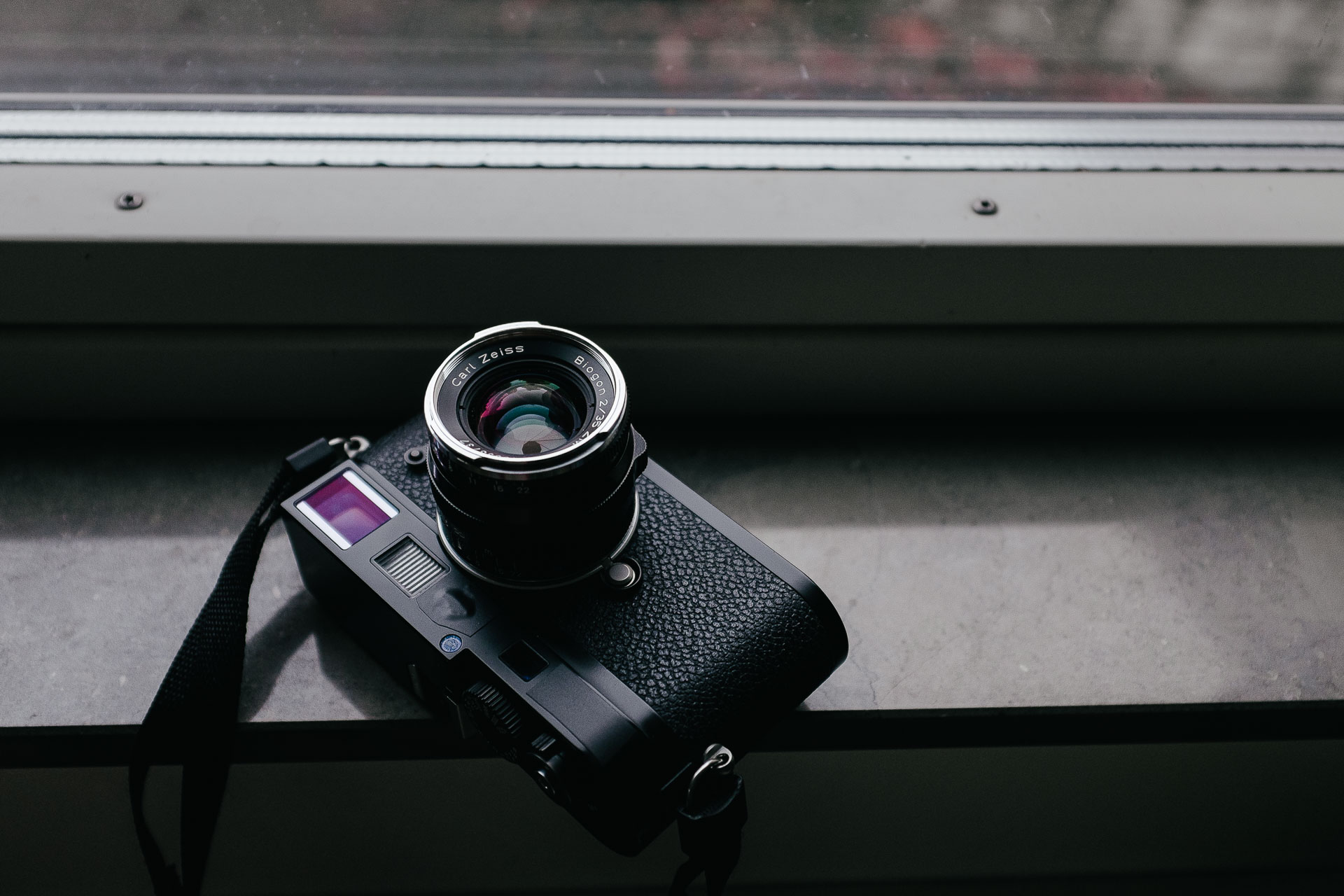

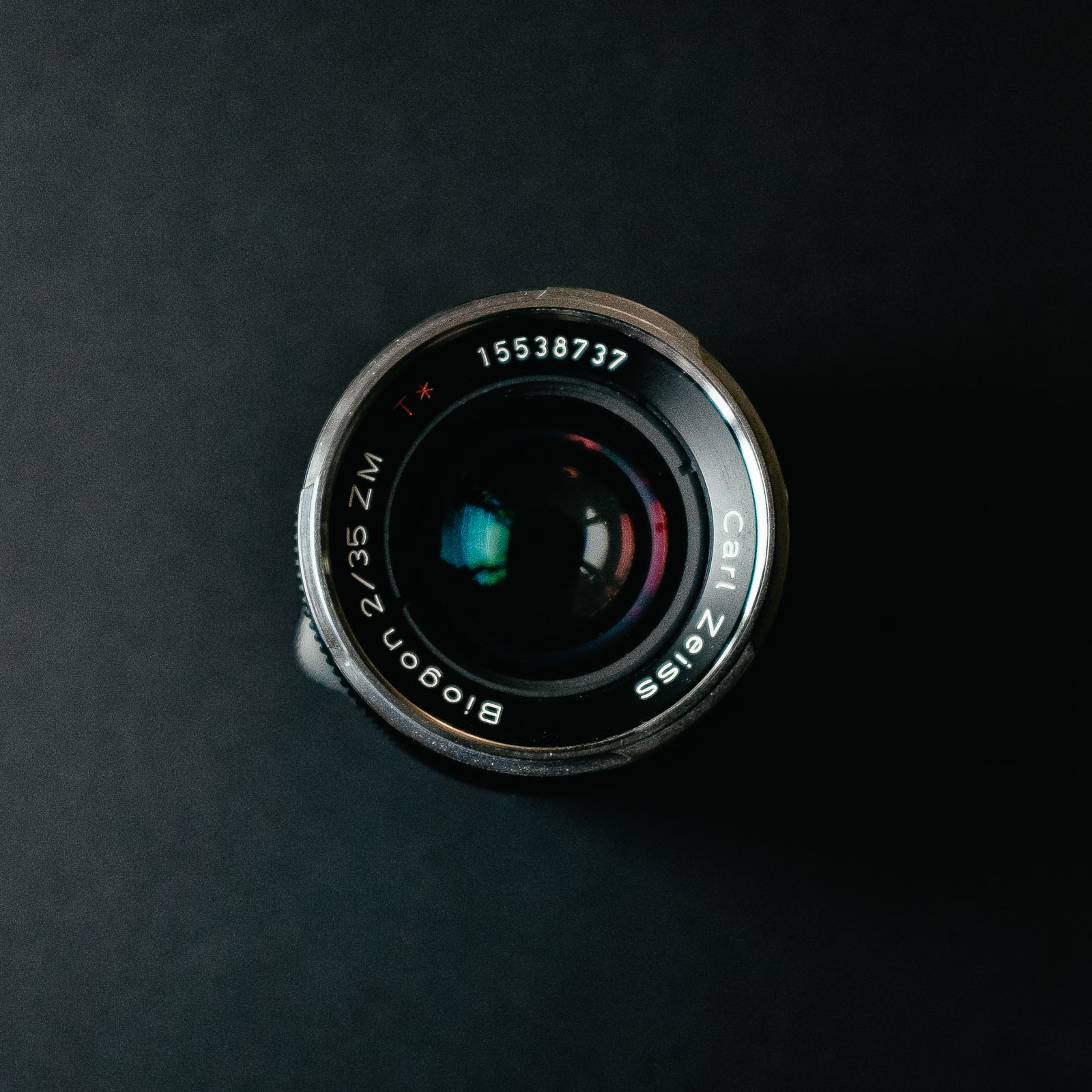
←
The 35mm focal length is considered by many the sweet spot for use on rangefinders. It’s a versatile focal length and plays well with the viewfinder magnification of most M-mount cameras. For many it’s an anchor lens – the one which the rest of the kit revolves around. It’s even a popular choice as an only lens.
Zeiss offers no less than three different 35mm lenses in their M-mount line up (referred to as ZM). There’s the compact but slow f/2.8 version, the fast but huge f/1.4, and then there’s the subject of this review – the f/2 Biogon. Offering a good balance between size and performance, the Biogon looks like a goldilocks choice.
So how does it hold up? Let’s dissect!



35mm is generally considered a wide angle lens but is also quite close to the definition of a normal; offering a very neutral perspective that neither feels overly wide or long, and as a result many find it a very flexible choice. At f/2 the lens has a 17.5mm effective aperture. As all M-mount lenses, it’s manual focus only.
The Biogon is a relatively complex 9 element design. All surfaces are spherical and multi coated with Zeiss’s highly regarded T* coating. There are no versions of the lens to keep track of – it’s remained unchanged since its launch in 2005. The lens is produced by optical manufacturer Cosina in Japan, also the parent company of Voigtländer.
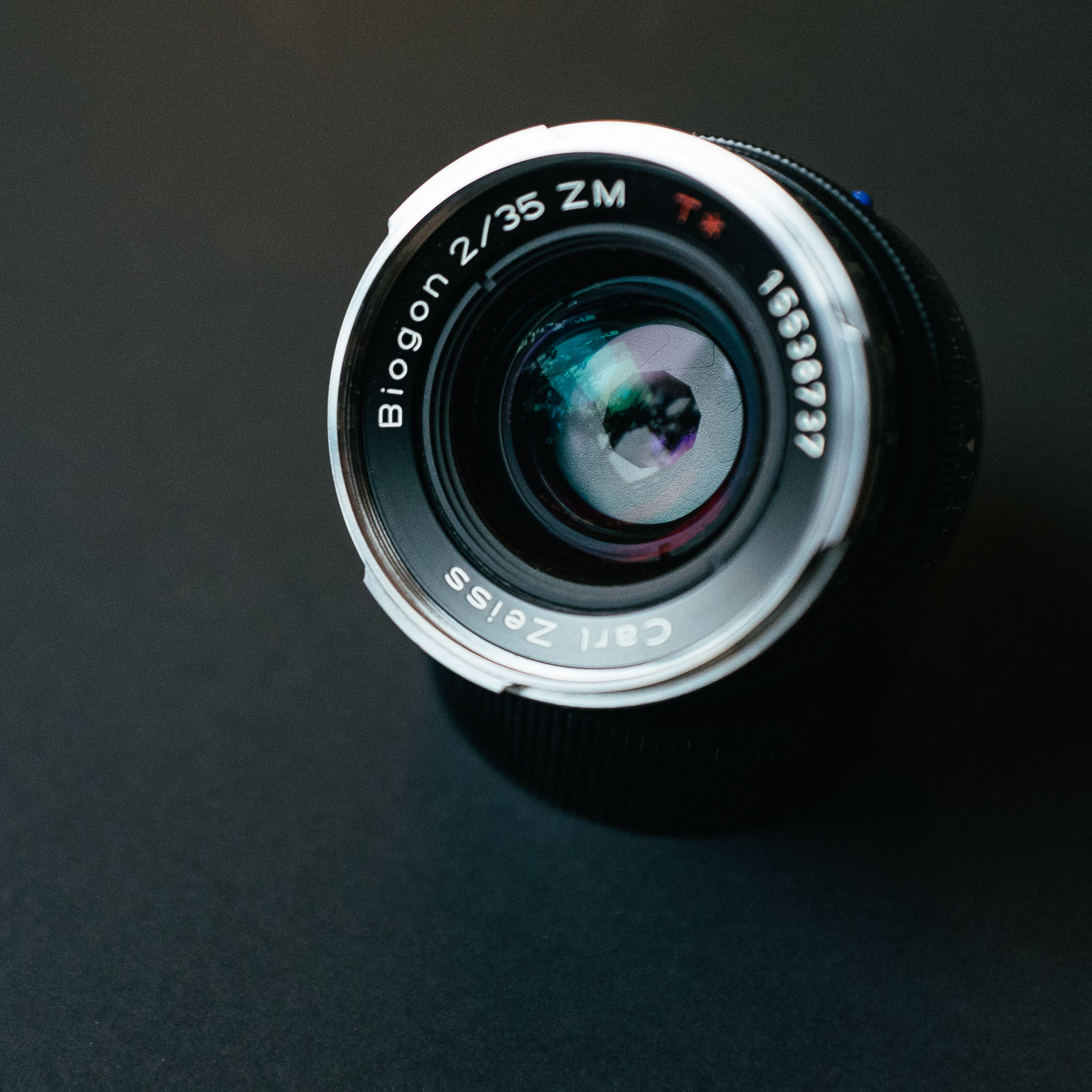


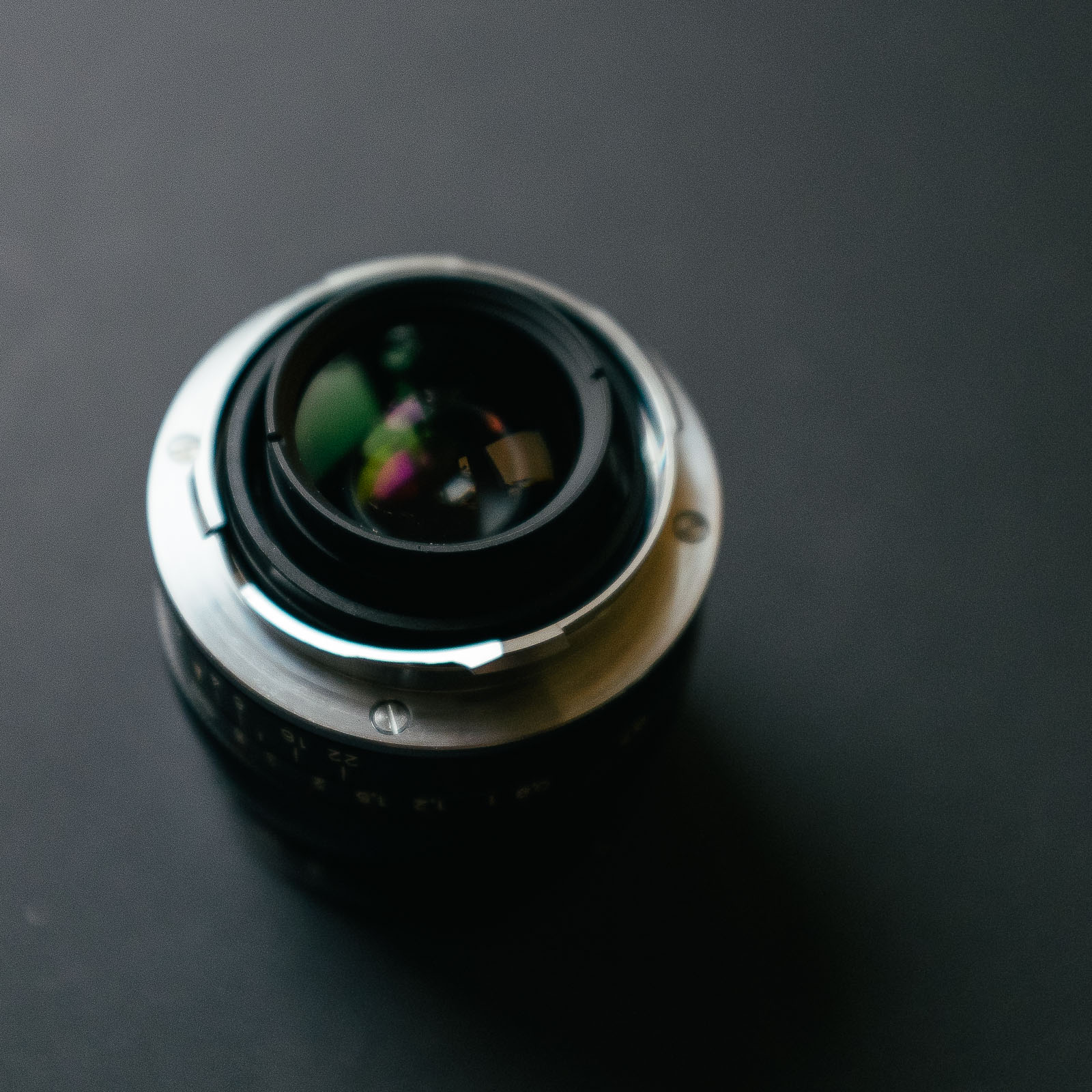
Front & rear mounts of the ZM Biogon. Samples from Leica M9
As I’ve come to understand it the current design philosophy at Zeiss dictate that each element in a lens makes a fairly small amount of work correcting aberrations in the final image. This leads to lenses that have many elements but are reasonably easy to produce due to less exacting demands on manufacturing tolerances and reduced need for exotic or aspherical elements. As a result their lenses tend to be larger than manufacturers with a different approach (e.g. Leica, Voigtländer) but with high performance and reasonable prices.
The Biogon is one of the clearer examples, mostly due to tradition. For decades the 35mm rangefinder lens has been a compact and elegant, usually symmetrical design with few elements. The Biogon moves away from this tradition and as a result looks quite large when compared to its close competitors. It’s one of the largest 35/2 lenses produced for the M-mount. Widening the context however, it seems no more than moderately sized. About the size of most 50/2 or 28/2.8 lenses for M-mount. It’s also far smaller than any SLR lens with similar specifications.
Size aside, the Biogon is a nice looking lens with a refined exterior design. Not quite as understated and utilitarian as most of Leica’s lenses, it instead strives to look a bit more elegant, a matter of taste which approach is more appealing.
The entire ZM line is close to identical in appearance except for barrel length and sometimes diameter. As I’ve owned four different ZM lenses and shot a few more still I feel I can comment a bit more generally about the construction, finishes and quality than what I’d be able to do based on just the single lens that this review is centered on.
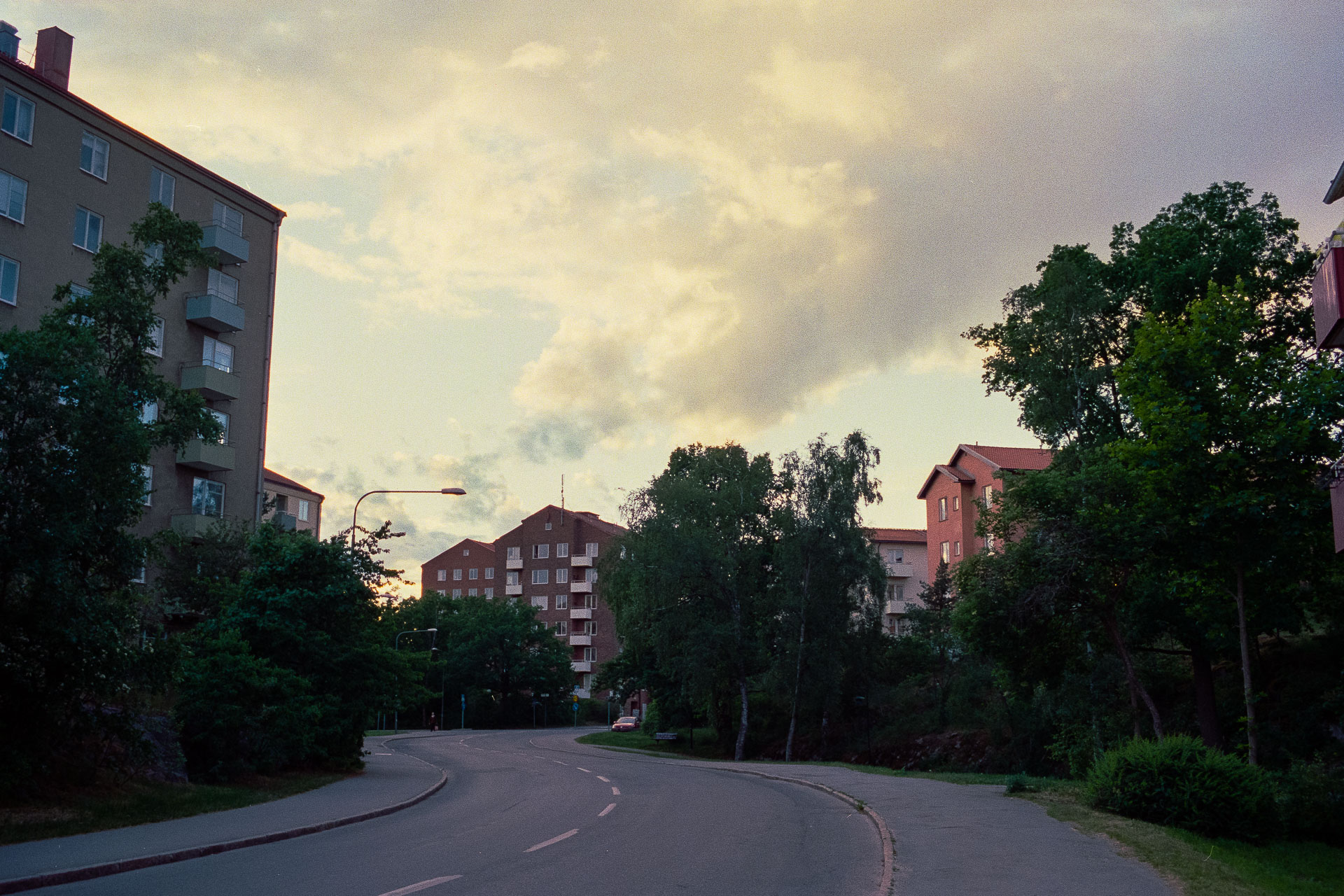
Leica M4-P
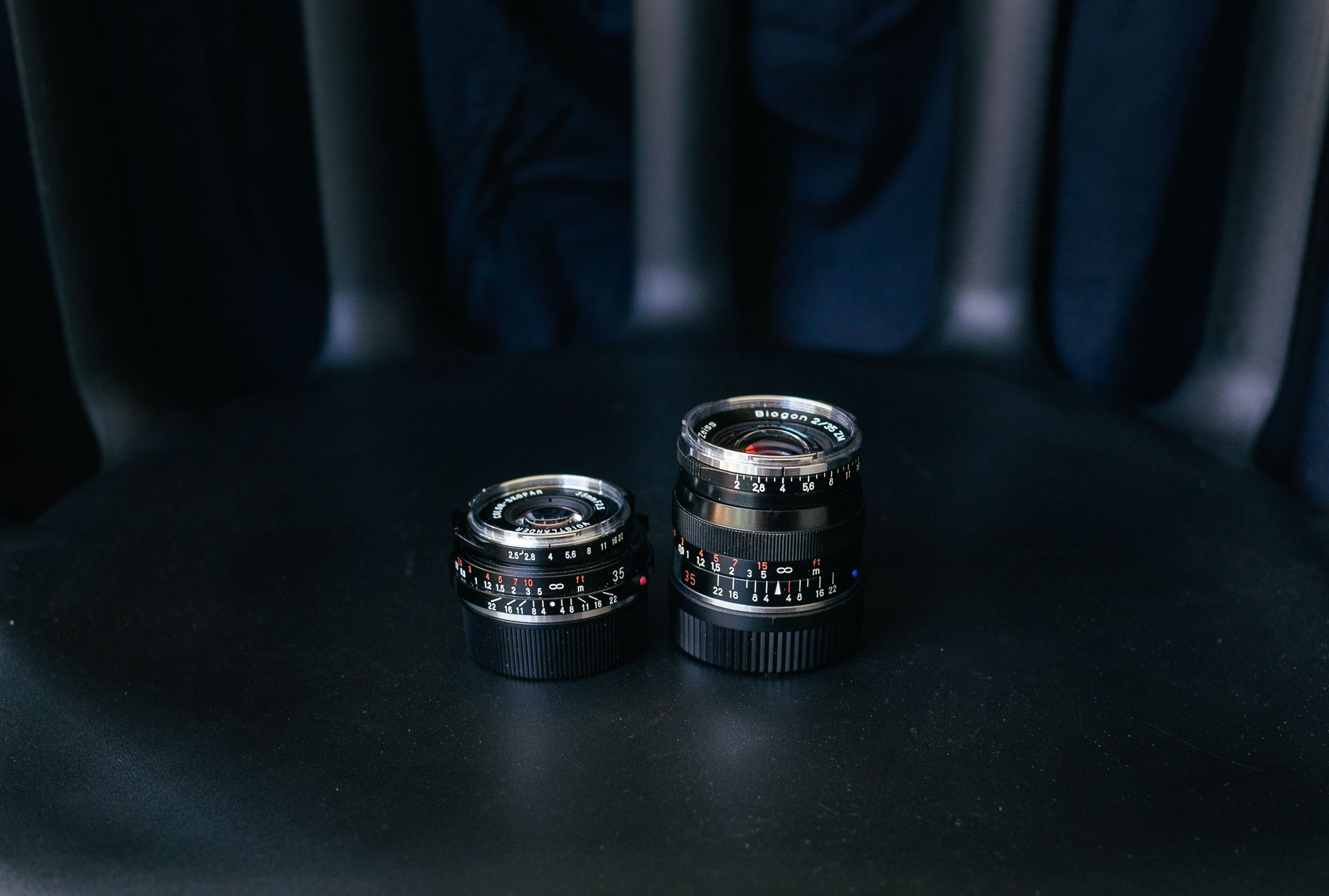
Compared to other lenses with similar specifications the ZM 35 Biogon looks quite large. While the Voigtländer 35/2.5 shown here is slower, many of the f/2 alternatives are very similar in size.
The ZM lenses are manufactured to a very high standard, being made almost exclusively from metal and glass, with very good durability and feel. There are some minor quality issues to look out for however – something I’ll get back to in a bit.
The housing is made from aluminium. Most ZM lenses are available in both black and chrome finishes. I’ve had both and prefer black aesthetically, but the chrome finish is a bit more refined. I’m a bit unsure of the application method. The black especially, being a bit glossier* than the anodized treatment of black Leica and Voigtländer lenses. I’m guessing it’s either anodized with a clear lacquer applied later, or painted straight on the aluminium in several layers. I believe the chrome finish is anodized as it appears a bit more matte.
* Interestingly the black finish seems to have changed over the years with my more recent ZM 50/1.5 Sonnar being a bit more matte than the older, quite glossy 35/2 Biogon and 50/2 Planar that I own.
The chrome lenses show wear a bit more gracefully with the black ones attracting fingerprints and grime as well as picks up scratches easier. Still both finishes are very durable, perhaps even more so than the Leica and Voigtländer counterparts with all my ZM lenses having only shown minimal marks of wear.
Most Zeiss ZM lenses are manufactured by Cosina in the same plant as Voigtländer lenses and a few similarities in build can be seen. For instance the front ring is identical to some of the Voigtländer M-mount lenses and accessories can even be used interchangeably between them*. The ring is made from chromed brass, a hard wearing material but also highly visible and can cause visible reflections when shooting through glass.
* the hood can be mounted perfectly on the Voigtländer 40/1.4 for instance.
The aperture generously has ten blades resulting in highlight stars with ten points and potentially contributing to smoother bokeh stopped down.
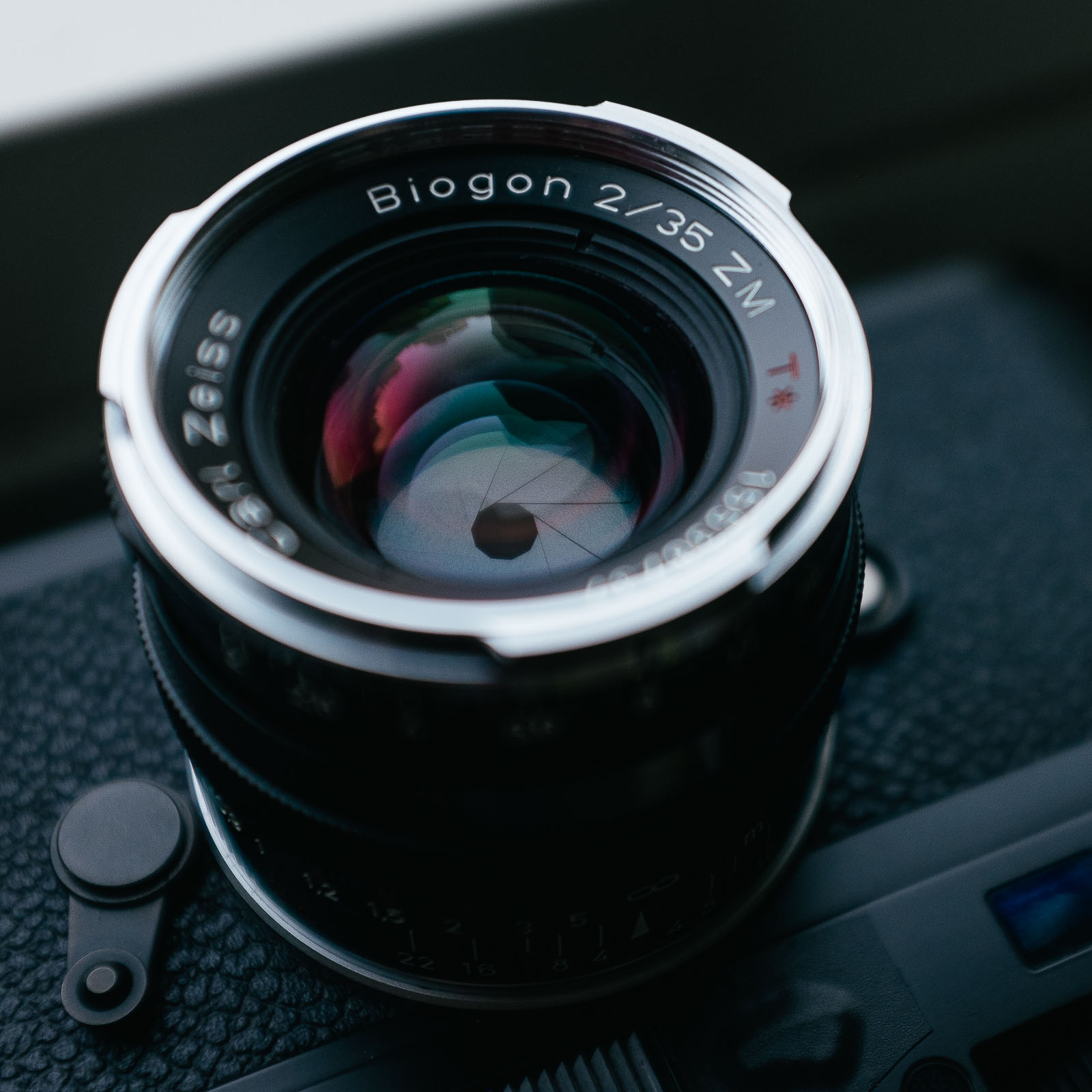
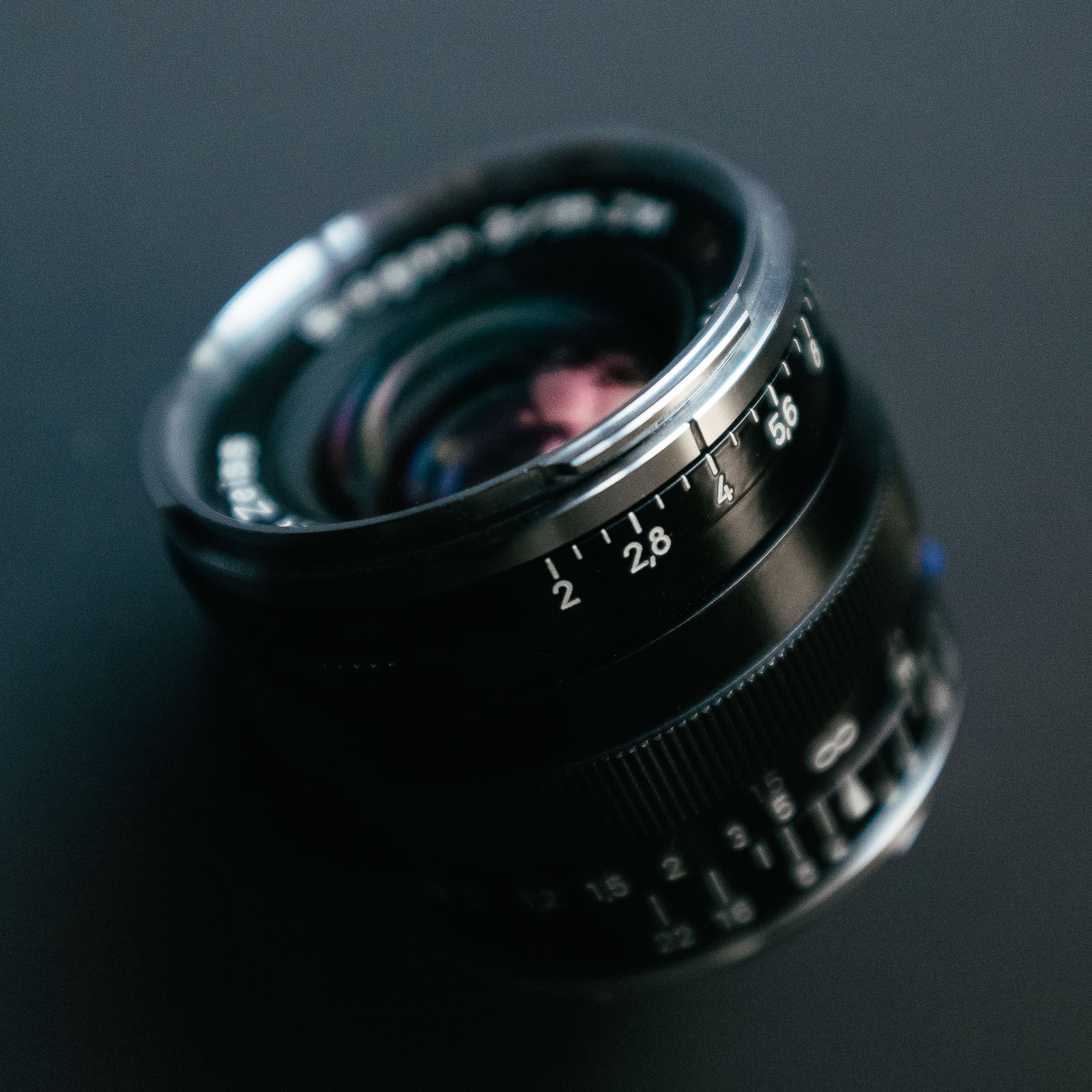
Note ten-bladed aperture and third stop markings.
Markings are engraved and painted in two variations of DIN (though with a few bespoke characters). On a black lens metric distance scale, aperture and depth of field scales are painted white, the imperial scale painted a very subdued shade of red* leading to very poor visibility in low light. The focal length identifier is also painted red, potentially leading to some confusion if picking between several ZM lenses in even moderately dark conditions, especially since their exterior appearances are so similar. Visibility is better on the chrome lenses where the metric scale is in black and the imperial one blue.
* Like the black finish the shade of red has also shifted over the years with my more recent ZM 50/1.5 Sonnar having a brighter, more visible, red colour than my older 35/2 Biogon and 50/2 Planar. On the Sonnar the focal length marking is also white instead of red.
Full aperture stops are marked with numbers. Unlike Leica and Voigtländer lenses the intermediate stops also have markings. The ZM lenses have third stop settings on the aperture instead of the usual half stops.
There’s no hood included, but a vented metal one is available, fitting both the ZM 35/2 and the 50/2. It’s priced dearly and while it’s well made I don’t feel it’s worth getting. I got it included in my purchase but rarely use it. The lens is big enough without it and generally flare resistant to the point of not being an issue.
The front lens cap might seem pretty irrelevant to touch on, but the ones for the ZM lenses are by far the worst ones I’ve ever come across. It’s frankly pretty incredible how poor the cap is considering it’s a problem that’s been solved for decades by every other lens manufacturer. Somehow the ZM lens caps manage to be both fiddly to put on and incredibly loose once fitted. Because of this I generally use third party caps for my ZM lenses.

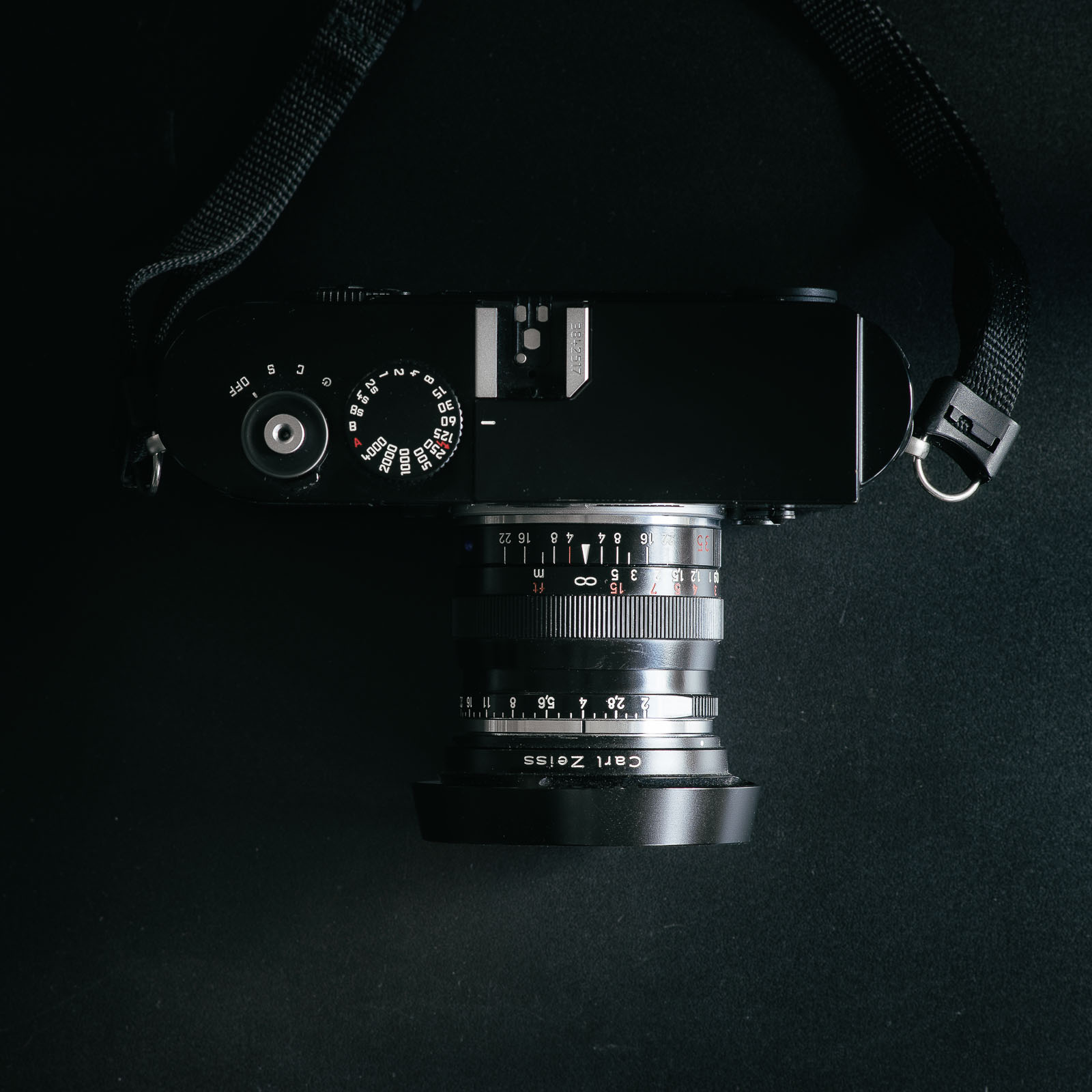
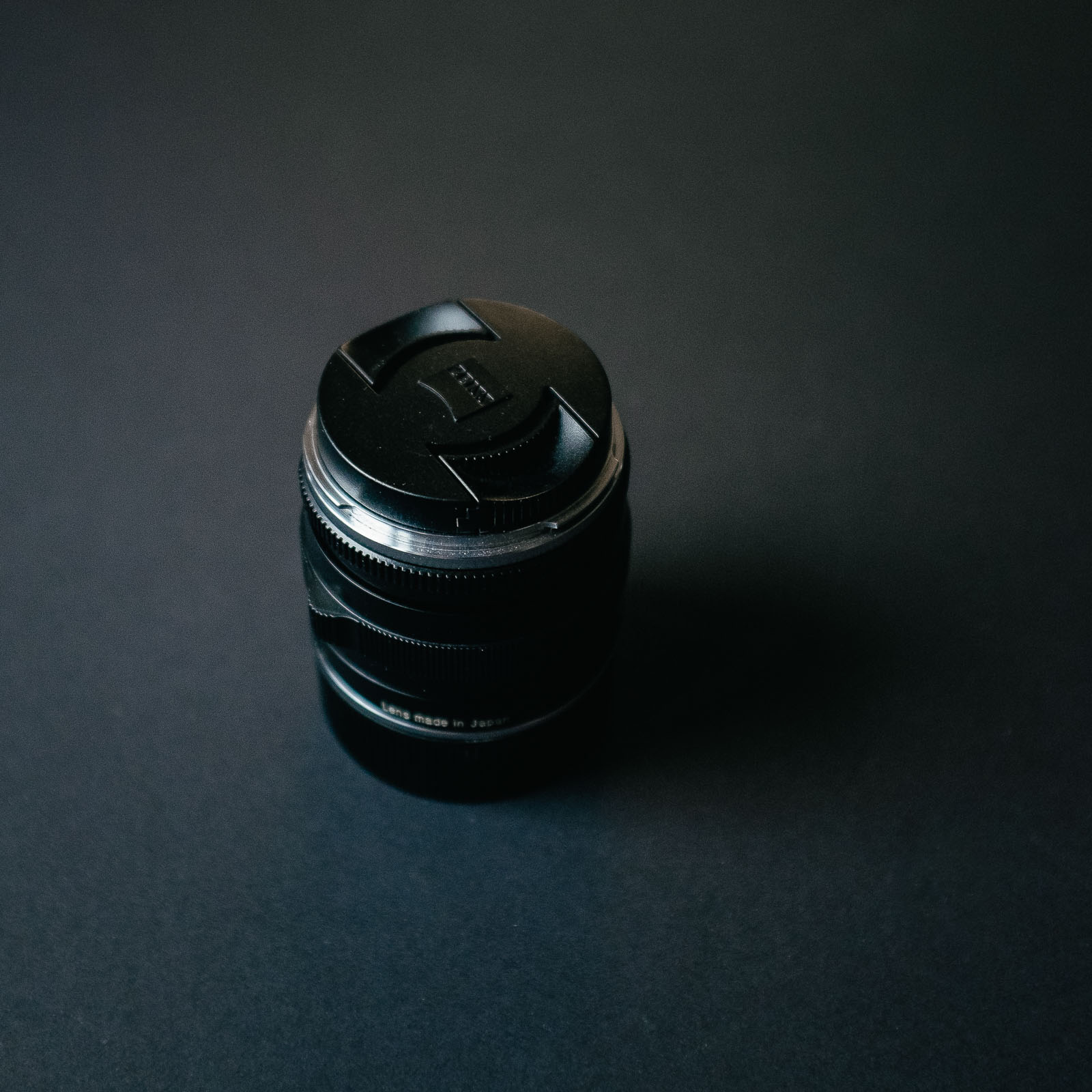
Hood and lens cap. Also note subdued red markings.
The feel of the aperture settings are very refined. Each stop has just the right amount of distinct resistance and feels reassuringly solid.
The focusing mechanics on the other hand is something of a weak spot with the ZM line. While the majority of copies work very well some lenses develop signs of wear very quickly (in a matter of a few years, compared to decades for most other manual focus lenses). Binding and inconsistent focusing feel are the most common issues. Some ZM’s also develop a wobble where the optical cell becomes loose in relation to the focusing helicoid*.
* I’ve encountered all these issues on several occasions, so it’s not a matter of hearsay. The worst problems was with a ZM 28 – an optically magnificent lens that I shot over a few years. During that time the focusing feel went from pretty good to quite awful with binding and a pronounced wobble. Servicing brought it back to feeling fine though.
Lenses from more recent production batches seem to exhibit less issues than earlier ones* and copies that exhibit these issues seem to be in a clear minority. In my experience the issues are also remedied by a normal servicing.
* My guess is that these issues are probably due to the chosen lubrication or materials, or a combination of both. So it makes sense that adjustments to the production would reduce the issues.
These issues aren’t unique to the ZM line but what’s unusual is how quickly they develop in some of the lenses. While it’s no surprise that the cheaper Zeiss lenses aren’t quite on the same level of construction as Leica’s equivalents it’s notable that every Voigtländer lens I’ve shot has been more consistent in feel, especially considering that they are made in the same factory.
Now, that this potential issue exists isn’t really something that has dissuaded me from the ZM lenses. As more recent lenses seem unaffected and all the ones I currently own are quite good I don’t worry much. Considering even a lens with severe issues (like my ZM 28) can be brought into good condition by a simple servicing these issue definitely don’t make me choose other marquees over Zeiss.
Still when making a purchase I do factor in that a ZM lens might need more frequent servicing. So if they later do need it I’m prepared and if they don’t I’m pleasantly surprised.
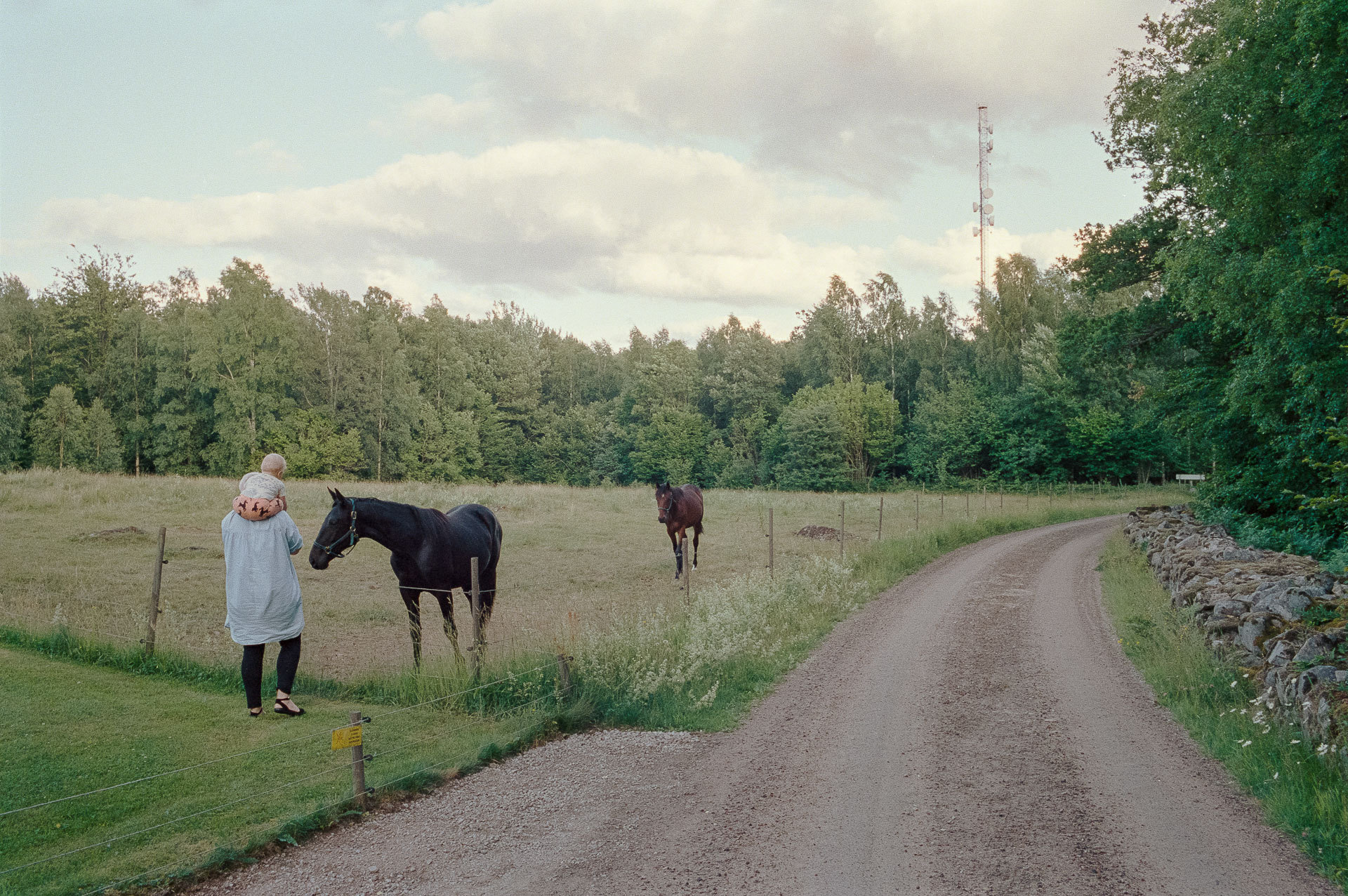
I love this shot of my wife & daughter, meeting horses for the first time – Leica M4-P
The entire ZM line also share practically identical ergonomics. The lenses are definitely sound in this department, the Biogon included. There are no major issues, but depending on your preferences it might fall short of being best in class.
A point of contention between rangefinder photographers is whether focusing is best done with a tab or a ring. Traditionally wide angle rangefinder lenses have been equipped with a lever or tab and longer lenses a ring. The tab offers more haptic feedback and with experience you can start to tell and set the focusing distance by feel. Some people prefer the ring despite losing that additional positioning information since it can be grabbed anywhere around the circumference of the lens and act the same way. A ring can also have a longer throw which makes it a better fit for longer lenses. Each solution has firm followers and to some a lens featuring the “wrong” alternative can mean that it won’t even be considered for purchase. With the ZM line Zeiss has aimed to come up with a solution that pleases both groups.
The focus ring is a finely ribbed, reasonably wide band around the entire lens circumference offering good grip regardless of conditions. At the position where the tab is generally placed is a small protrusion of the ring – this little nub aims to bridge the gap between a focusing tab and pure ring. It means handles like a normal ring, but that it’s also possible to set the focusing distance by feeling the position of the nub.
To me it’s a pretty good compromise. I’m firmly in preference of tabbed lenses, but in practice the ZM nub is a clear improvement over a plain ring. While not as quick or comfortable as a tab, the nub still makes it possible to set focus distance by feel.
The focus throw is 90° and a hair. A good balance between speed and accuracy. My 35 Biogon doesn’t suffer from the previously mentioned issues with the focusing mechanics and feels very smooth. As a whole the focusing experience is very transparent in practice.
An issue that can plague small lenses with focusing rings rather than tabs is that it becomes hard to separate the aperture and focusing rings by feel*. The 35 Biogon does well here. The aperture ring is clearly removed from the focusing ring and also has a slightly different texture and shape making it easy to tell the two rings apart.
* The Summicron 50 V is an example of this – since both rings are practically identical as well as placed close together I sometimes grab the wrong one
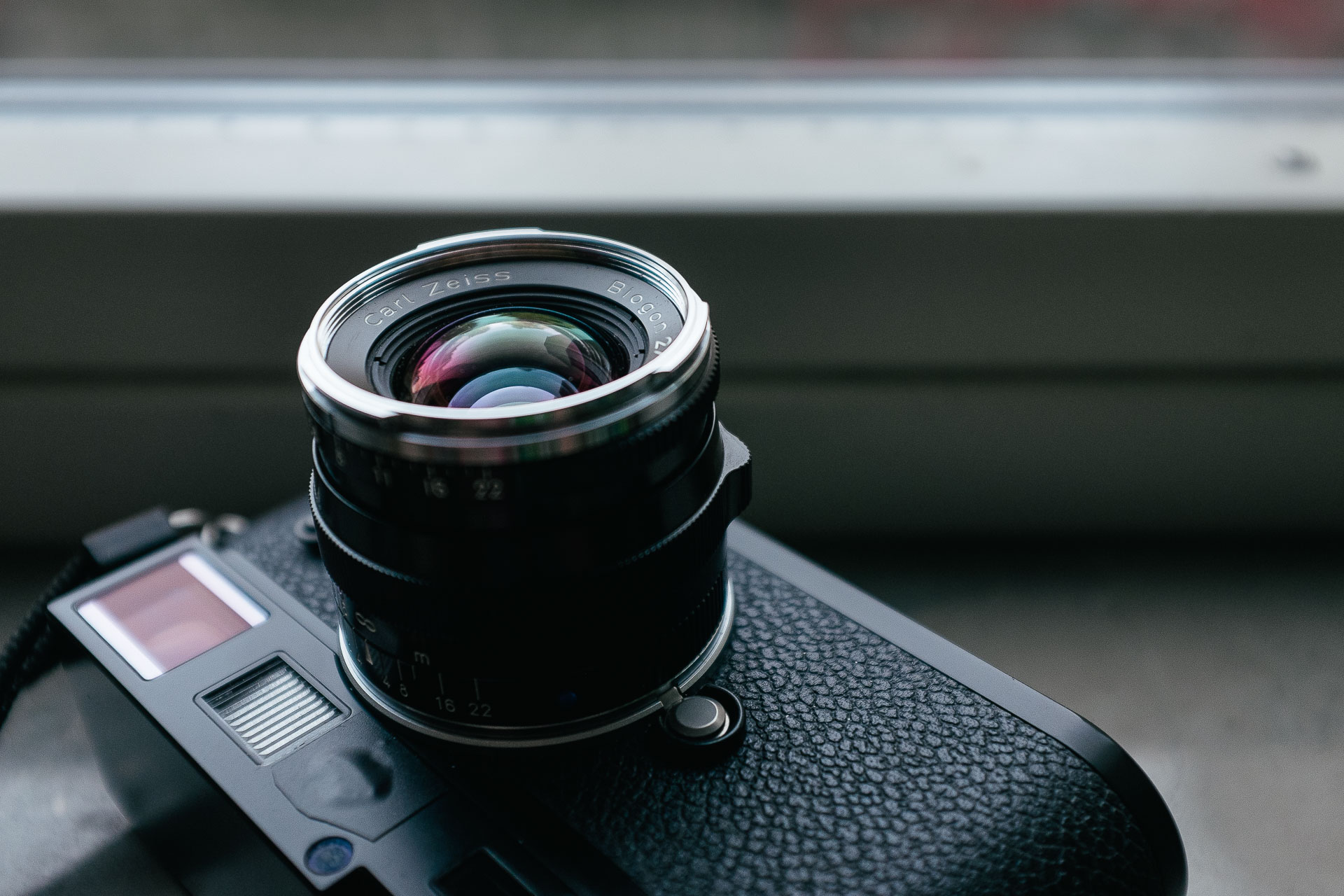
The focusing nub can be seen clearly here. Also note the distance to the aperture dial and the different texturing of the two rings.
As mentioned above is that the aperture is set in third stop increments instead of half stops. Some people might enjoy the added control this offers. But as I rarely even use half stops, third stops feel overkill for anything I shoot. The only result is that it makes the lens feel a bit slow to work with.
That the Biogon is larger than many peers isn't a huge issue in practice. The biggest practical problem this poses is that the lens blocks a good chunk of the viewfinder in most rangefinder cameras, which can be frustrating when composing.
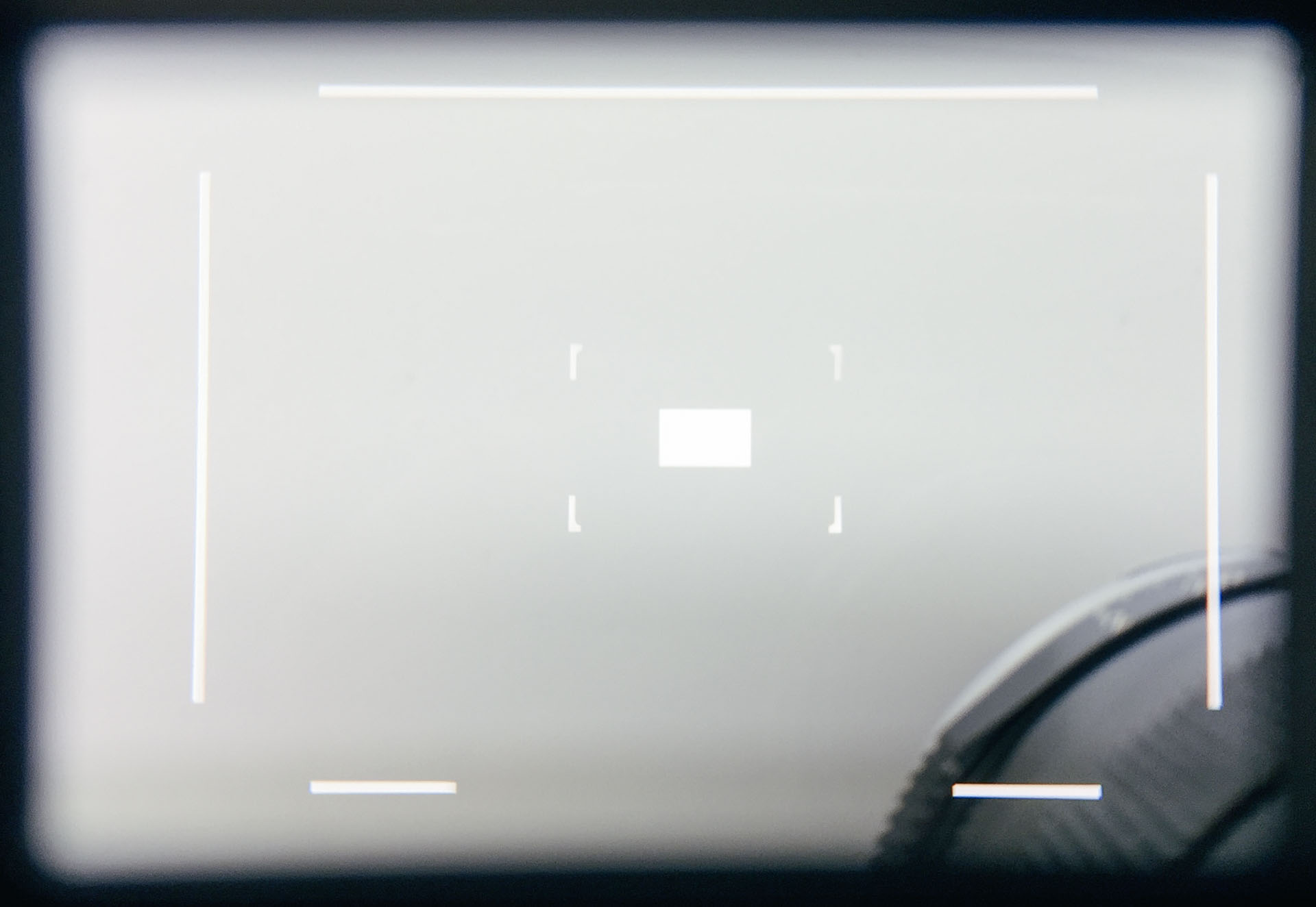
A view through the viewfinder of the Leica M9 with the Biogon at MFD.
A smaller lens also balances better on most rangefinder cameras and is more comfortable to shoot and handle.
The question is if the increased size brings meaningful gains in performance. Let’s find out –
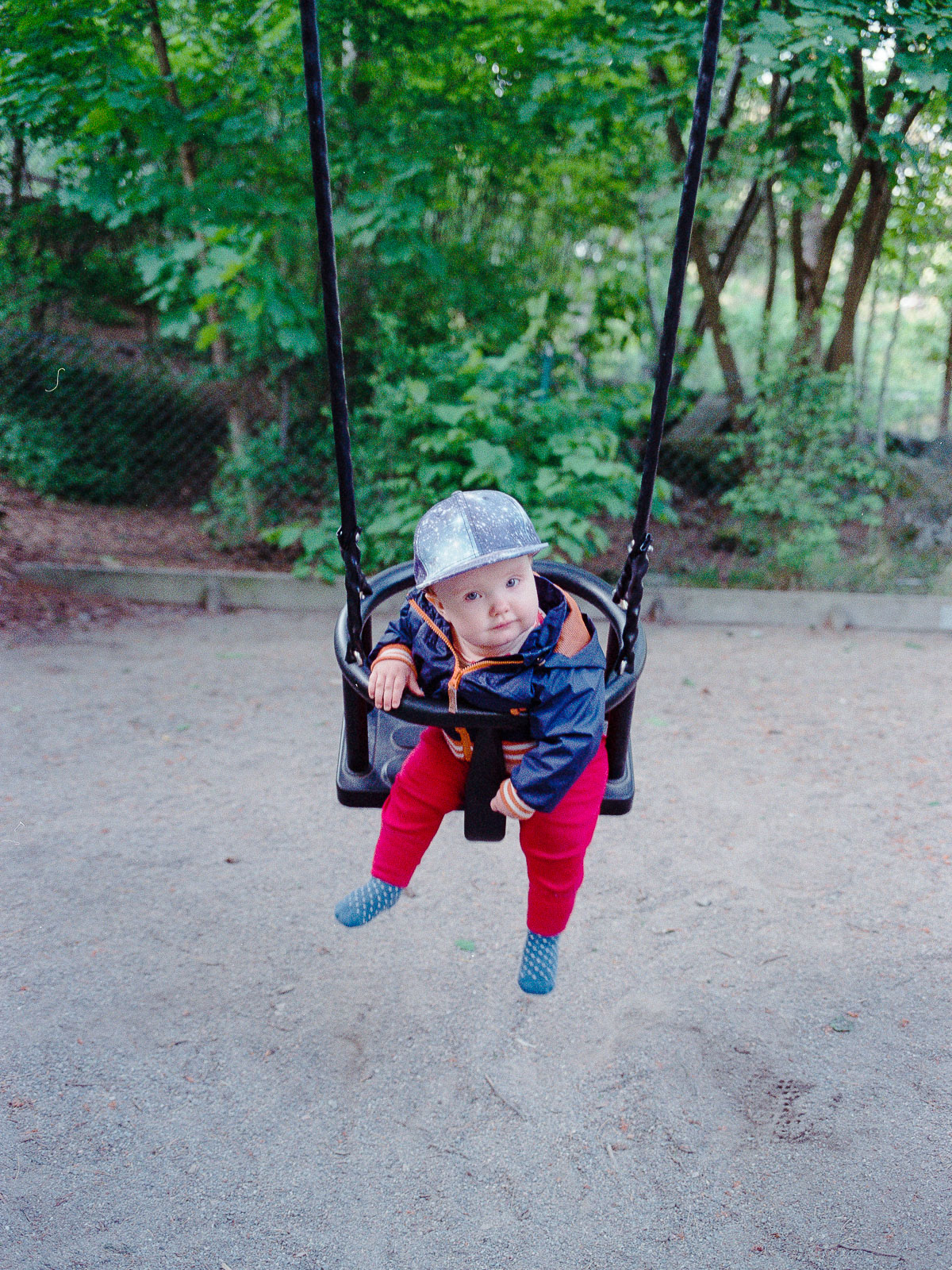
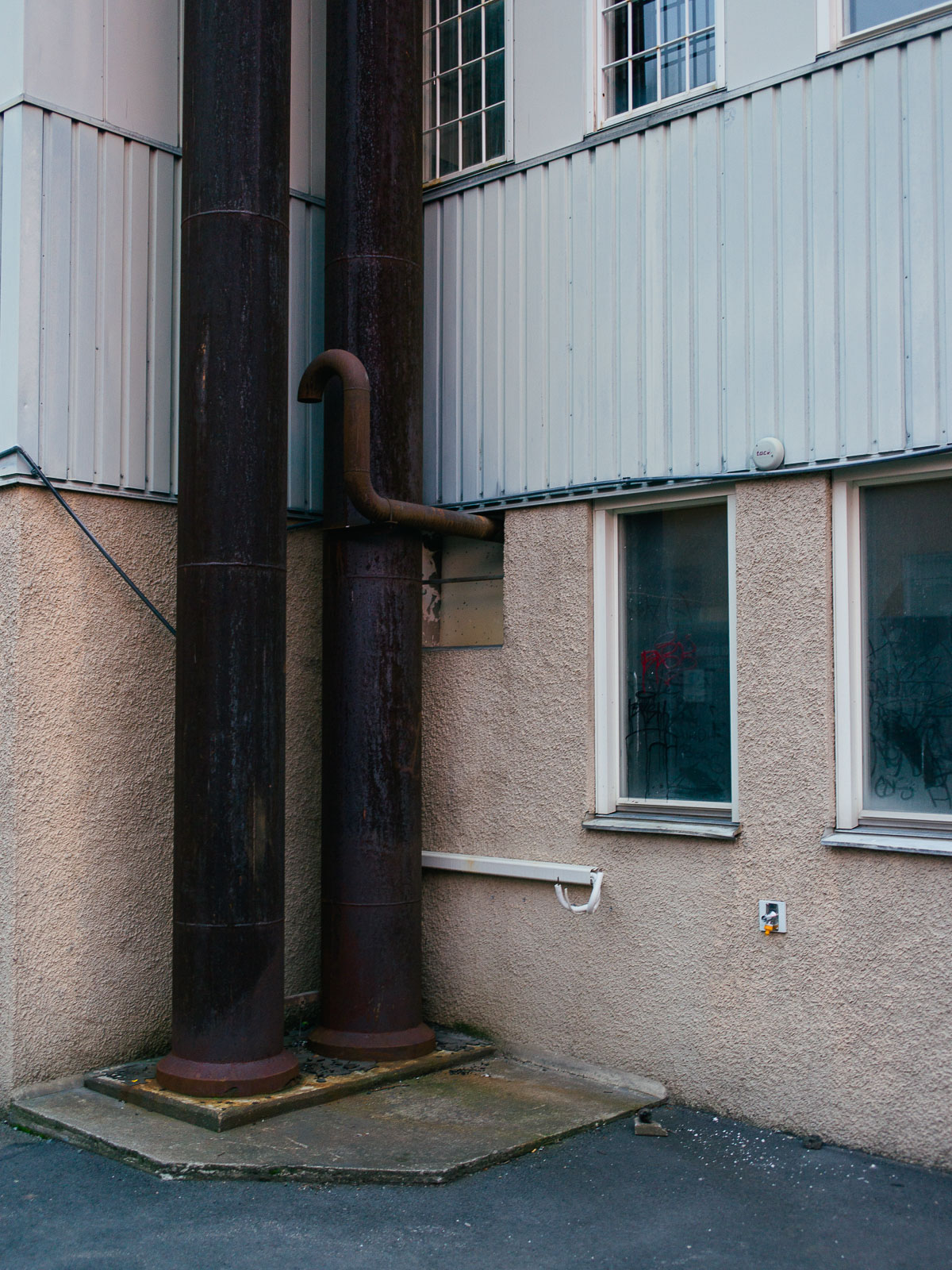
Leica M4-P / M9
If there’s a single raison d’être to be found for the Biogon it’s the image quality. It offers outstanding performance with visible gains over its peers. There are a few minor caveats though, and under some circumstances you can even end up with output that’s aesthetically slightly less appealing than some simpler alternatives.
On axis performance is impressive regardless of aperture and most of the frame looks good already wide open. Contrast is high across the board and there’s very good definition of both higher and lower frequencies. Even very fine details are well defined.
At wider apertures definition drops towards the edges of the frame. Edges and corners still have fair contrast but lack some bite. The very gradual loss of definition leaves predictability in the behaviour compered to some of peers where the drop can be more irregular. Pronounced coma subdues the rendering of detail along the edges and can under some circumstances leaves a slightly smeared impression.
Fortunately stopping down to just f/2.8 reduces coma and increases contrast, giving excellent clarity across most of the frame. The rapid increase in definition continues at f/4 and f/5.6 where the output becomes truly excellent with extremely high levels of micro and macro contrast in all but the deepest corners. By f/8 everything looks just about perfect.
The lens is slightly better at distance than in close quarters.
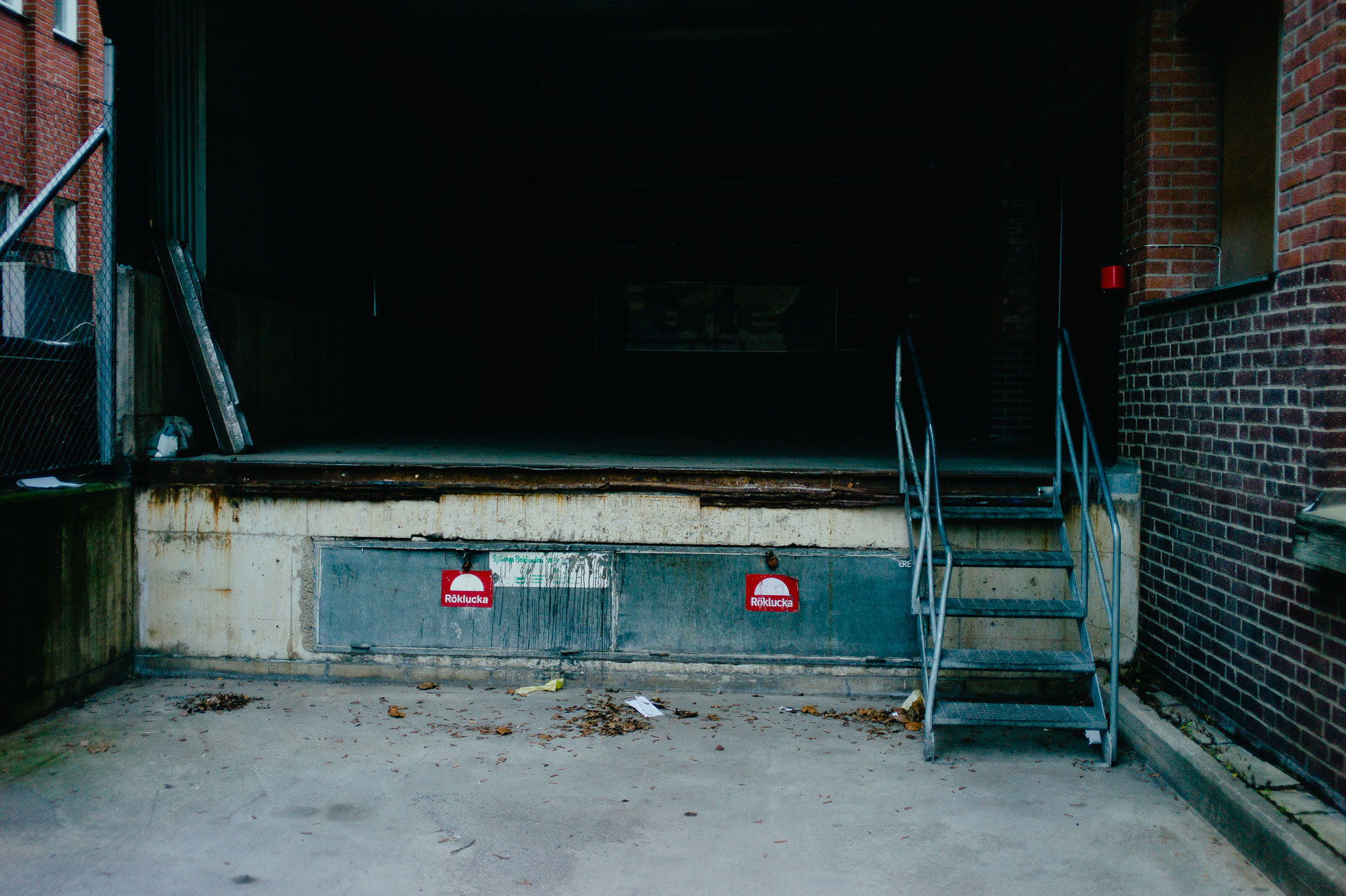
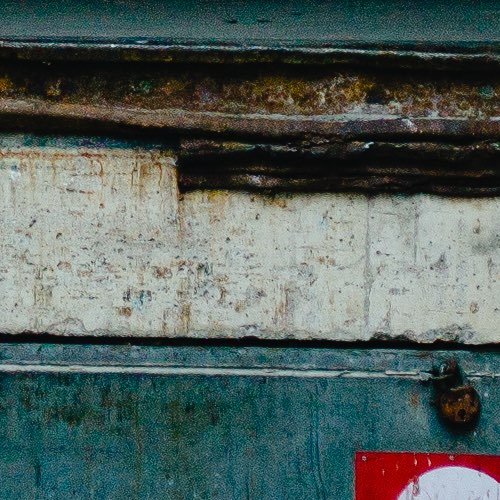
Contrast is impressive across the board, even wide open. Despite this frame being shot at ISO 400 and pushed to around 640 the tonal separation is excellent. Leica M9 – f/2.
The edges lose some definition, but stopping down to increases performance rapidly. View corner crops – f/2 and f/2.8 (excuse the slight difference in framing)


Stopping down further gives exceptional results. Especially at a distance little can touch the high definition of the Biogon. Details like the window blinds and the TV-antenna even results in hints of moire – resolving beyond the resolution of the sensor. Leica M9 – f/4.
The colour reproduction is warm and clearly saturated. There’s a subtlety and distinction between close tones and the overall palette is very appealing.
Like most peers the Biogon suffers from poor bokeh wide open. It can be harsh with double lines and an overall messy and distracting impression. It’s among the worst in its class in this regard, though to be fair few alternatives do much better.
Pleasant enough results are achieved in many situations, but as conditions become challenging it breaks apart. It can occasionally look quite awful.
Stopping down cleans up the texturing and f/2.8 looks fine the vast majority of the time. Smaller apertures makes it even better behaved but then there’s not all that much bokeh remaining.
Transitions are well defined with clear separation between planes. Even at a distance and slightly stopped down there’s distinct planes – an impressive trait that can look very nice, though it does require slightly more stringent focusing to be fully effective.
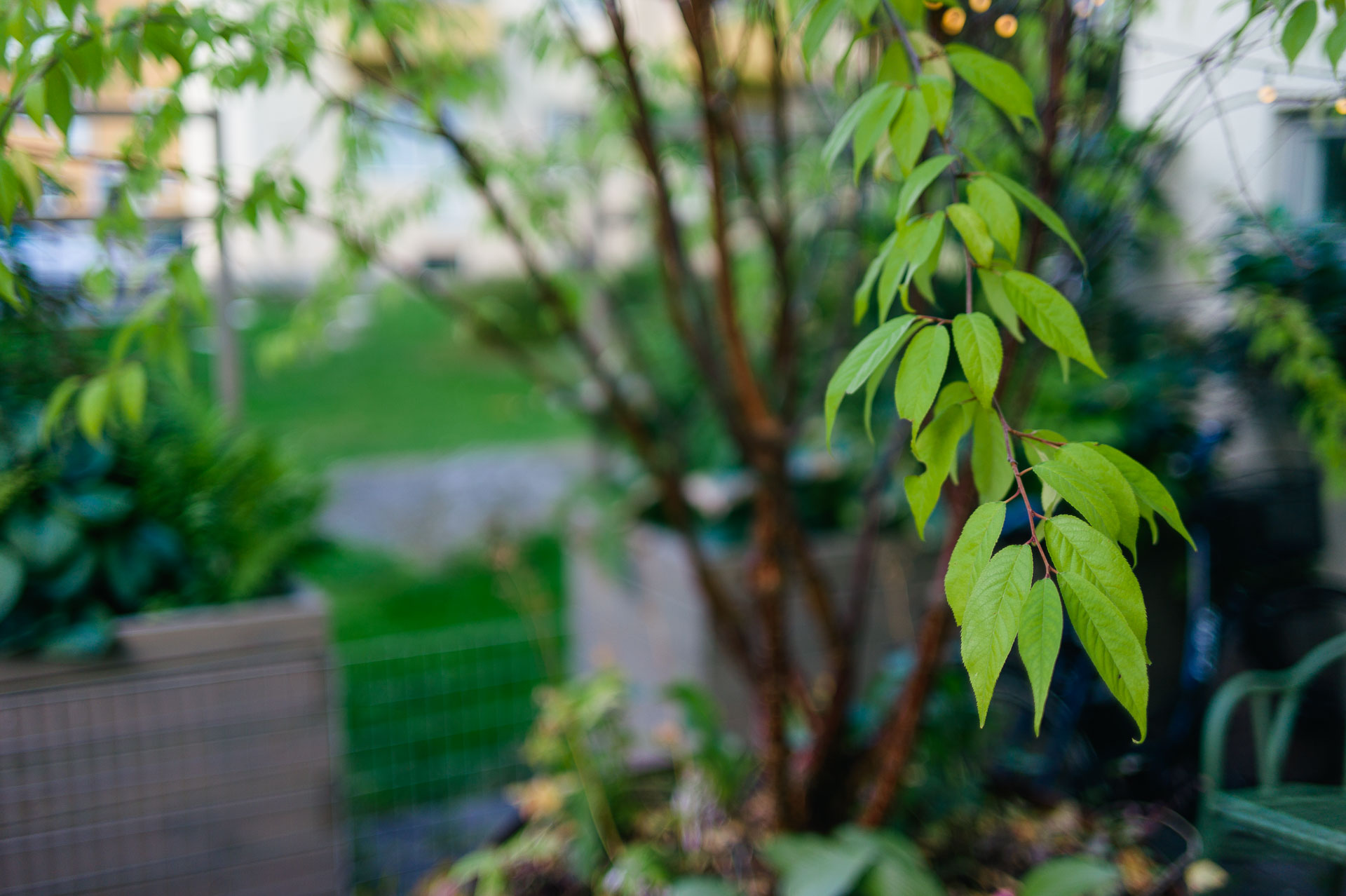
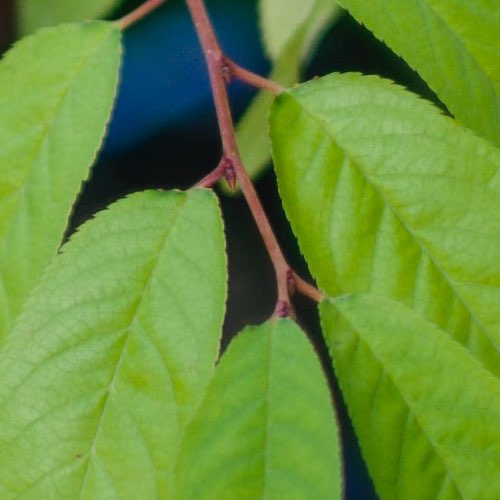
The bokeh has clear issues. This sample demonstrates it at its worst, giving a very distracting impression. On the other hand the level of definition at the focal point is once again exceptional already wide open. Leica M9 – f/2
Similar shot with Voigtländer 40/1.4 (also at f/2)
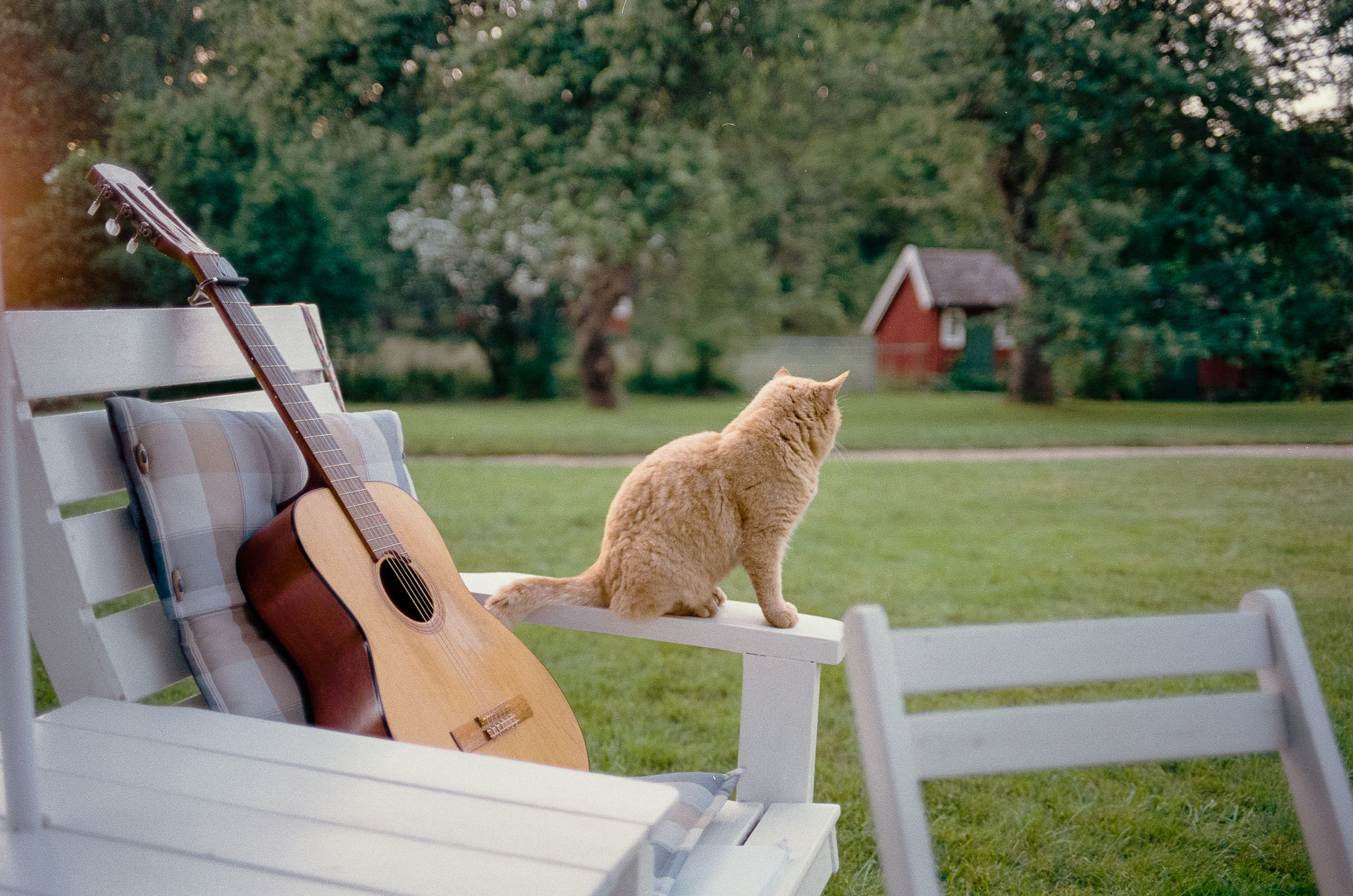
Finally a cat sample makes an appearance on the site. Despite the issues the bokeh can look good on many occasions. Leica M4-P – f/2

While hard to illustrate at this size the ability to retain separation between planes even at a distance and stopped down can be a useful trait. Leica M4-P – f/2.8
There’s very pronounced coma wide open as previously mentioned, enough to leave the outer portions of the frame looking smeared, especially when there’s moderate or high contrast transitions. Light sources can also take on a rather unappealing glow. This is remedied already at f/2.8 – leaving a much clearer impression.
There’s a bit of field curvature away from the camera that can lead to an odd look at moderate distances and wider apertures where the background can suddenly become in focus along the edges of the frame*
* an example is the earlier photo of a covered boat, where different branches of the tree in the corner are more in focus closer to the corner of the frame.
Vignetting is present with around a stop and a half wide open, reduced to less than a stop by f/4 and insignificant amounts by f/5.6.
An impressive trait is that there’s no distortion to speak of. There might a fraction of a percent measurable in lab tests, but never visible in actual use, even when looking for it.
Very slight colour fringes can be seen, especially at wider apertures and towards the edges, however never enough to be cause for concern.
The Biogon is generally very resistant to flare. While not totally immune ghosting is uncommon with only occasional hints of it. At rare times a rainbow-like ghost can be seen. Contrast and definition remain high even in challenging situations. An impressive performance, among the best in its class.

Note significant coma along the edges leaving an oddly smeared impression. Especially pronounced in high contrast areas such as around the "Centrum" sign. Leica M9 – f/2.
View a very similar shot at f/2.8
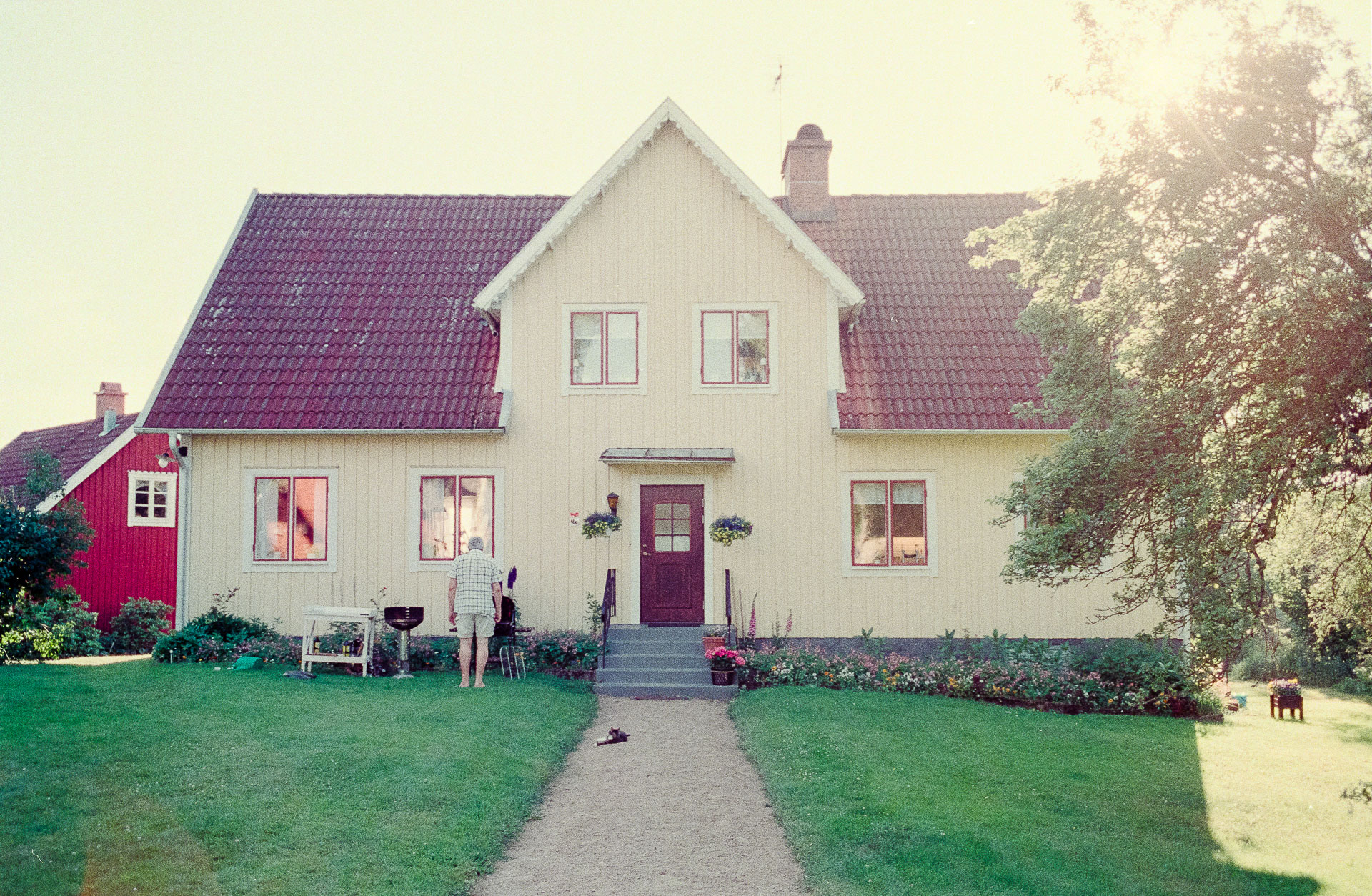
Flare resistance is very good. This is one of the worst instances I've come across. While there's a slight loss of contrast in the top right and a small ghost in the bottom left the overall contrast remains impressive. Leica M4-P
The evaluation above is valid regardless of capture medium, but nuances exist and since digital is more revealing in many cases that’s the primary medium for analysis. On film the rendering of course carries over but the subtleties can be perceived slightly different.
The Biogon makes renders beautifully on film. The high resolution, clarity and pronounced colour palette makes for very good negatives.
If a lens is a good fit for B&W is as much down to preferences as anything else. I feel the Biogon does quite well. There’s a definite modern touch without becoming clinical. To my eye the pronounced coma and poor bokeh can look especially distracting in B&W though.
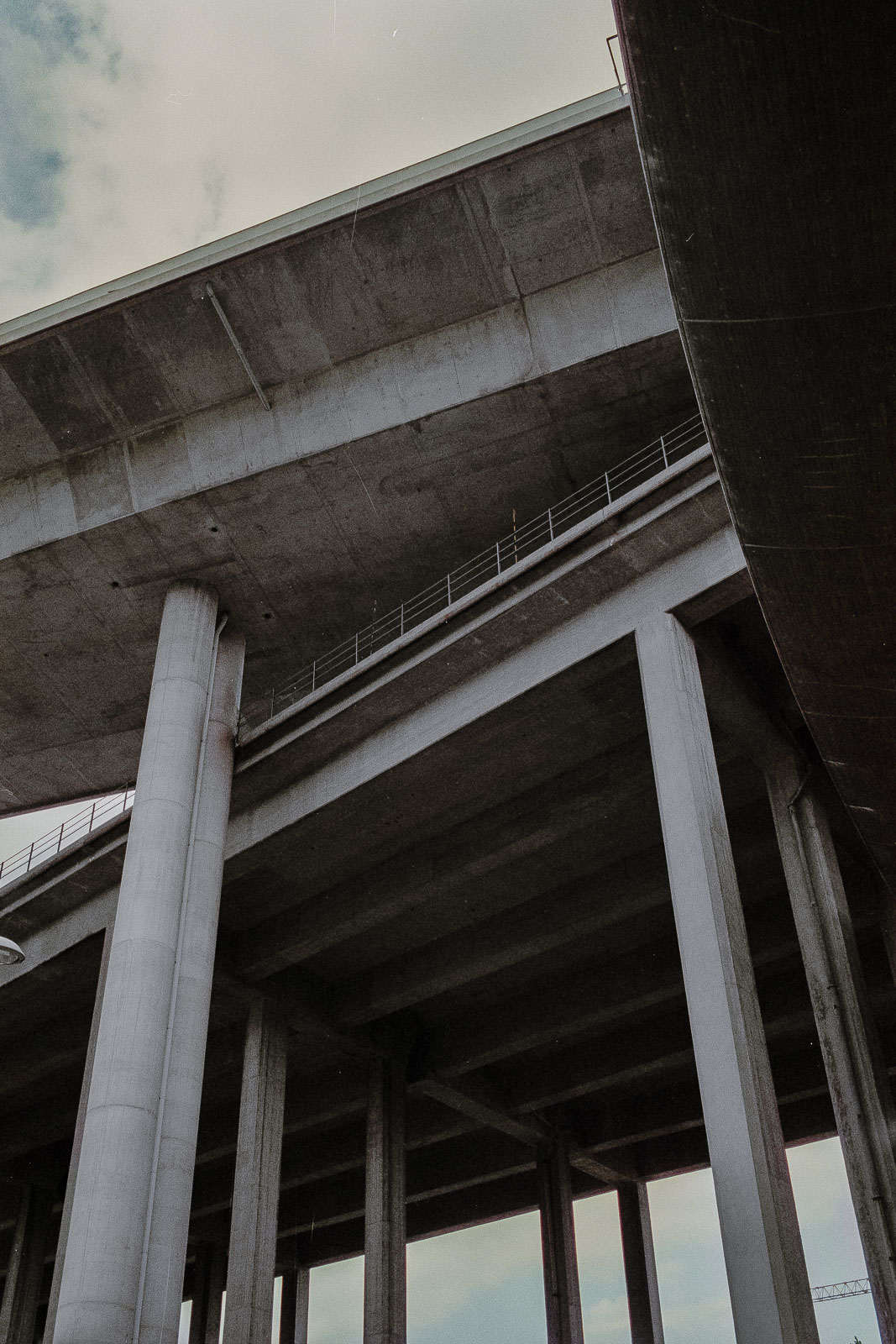
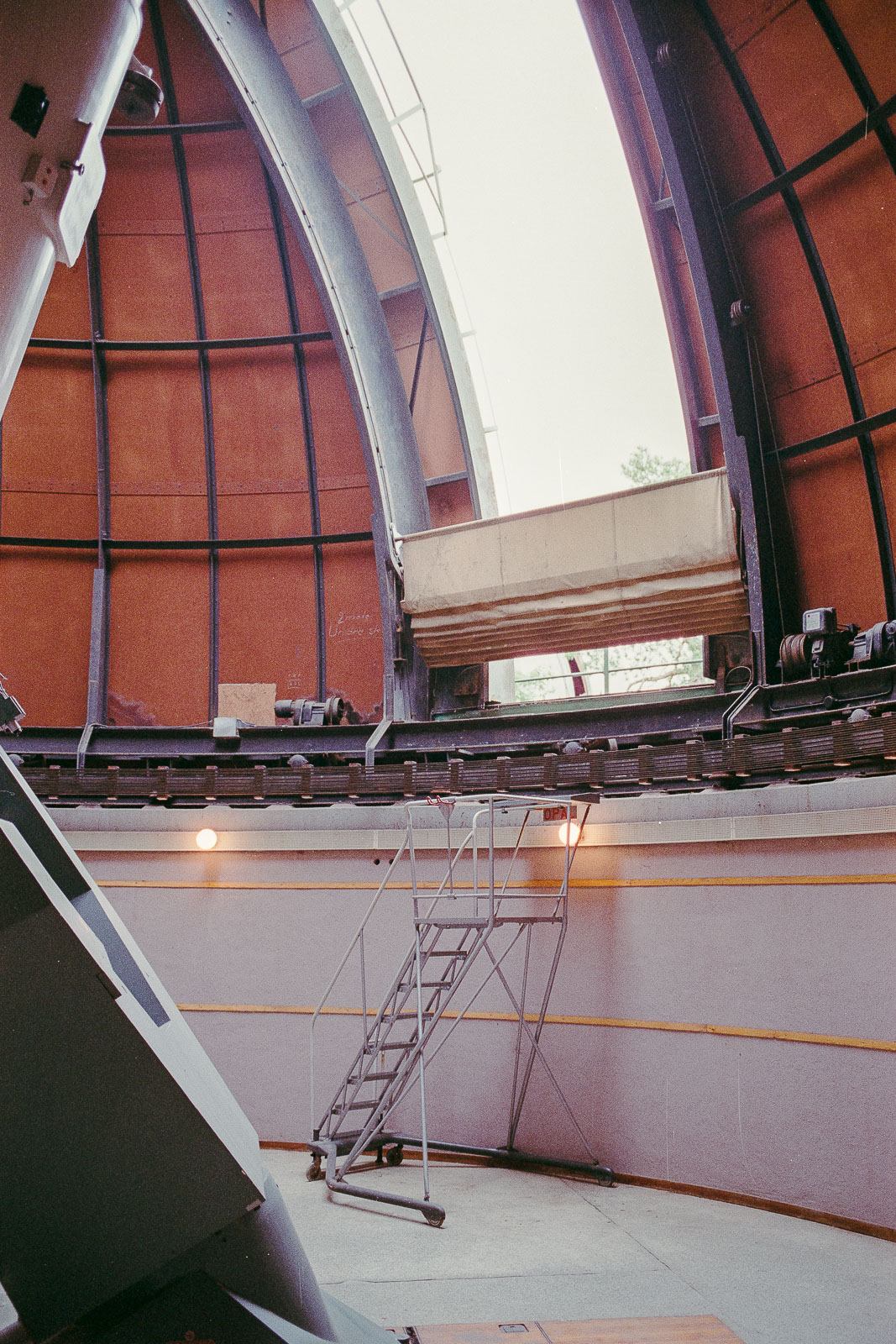
The strenghts carry over very well to film. Leica M4-P
The Biogon is an excellent performer across the board. It offers slight but visible gains in resolution, contrast and flare resistance compared to most lenses in its class. The output is both competent and beautiful thanks to the high contrast, warm colour palette and distinct transitions.
Wide open it’s ahead of most peers with only a few minor flaws visible – pronounced coma wide open, poor bokeh and to some extent the occasionally odd field curvature. Unfortunately I feel that those traits can be slightly distracting and compared to its peers you don’t always gain as much from a purely aesthetic point of view as from a technical one. Under some circumstances you might even end up losing a bit. The majority of the time it comes out ahead though, and often by a significant margin.
Stopping down a bit not only remedies the issues but also pushes the performance into truly excellent territory. Though I rarely take issue with stopped down performance of any of its peers it’s nice to see this level of impressive output.
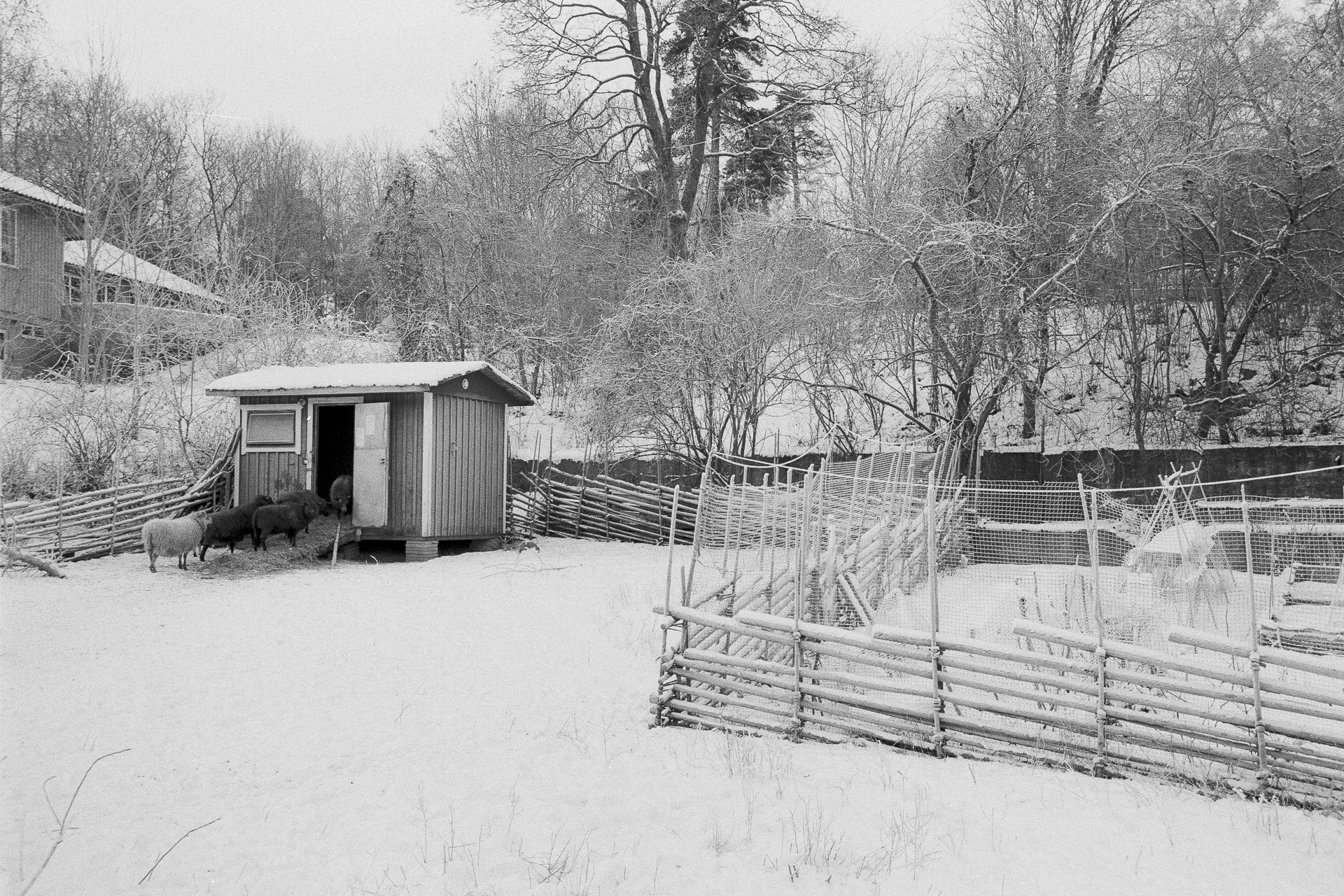
I’ve had the Biogon for about a year as I write this. So I’ve had plenty of time to put it through its paces across a number of different cameras.
35mm is probably my favorite single focal length for use on a Leica. It offers a balanced perspective and versatility and works very well with the cameras I like. An f/2 aperture generally means enough light gathering for all but the darkest conditions, as well as enough separation without any major penalties in size or price.
As I’ve shot with quite a few comparable lenses over the past few years I notice I’ve become rather picky and the tiny nitpicks of the Biogon has left me having a harder time fully bonding with the lens. If it wasn’t for me preferring smaller lenses, focusing tabs and half stop aperture settings I probably would’ve felt the Biogon to be just about a perfect lens. As it stands it leaves me slightly ambivalent.
I purchased the Biogon with the hopes of getting a boost in image quality and rendering compared to the other lenses I have. That mostly materialized and I’m frequently impressed with the output. Though I’m not quite sold on the wide open rendering at times and the stopped down performance of my other lenses are well beyond good enough too. Which leaves me feeling that I’m not really gaining much over my other lenses.
Still I find it hard to go back to those other lenses and lose that slight edge in image quality that I’ve gained. And from the shooting over the year I’ve had the Biogon more keepers were shot with it than any other lens. In the end I’m not quite sure where that leaves me as for my personal preferences. After shooting with the Biogon I’m a bit less happy with my other 35–40mm lenses than before, but my experiences with them leave the nitpicks of the Biogon standing out as much clearer issues for my personal preferences and I’m not sure that it holds greater appeal for me than the alternatives I keep comparing it to.
Objectively though there’s little to fault the Biogon in practical use and it represents a highly capable performer that can be applied to almost anything and be expected to deliver.
Excellent. Gives very high performance and a colour palette that looks very appealing on film. Balances and handles well. Unfortunately it blocks a pretty significant part of the viewfinder.
Excellent. Balances and handles well. The output is excellent. There's some colour shifts but selecting the Summicron 35 IV in the correction menu gives good results without noticeable shifts in most situations. Some specific circumstances result in the slight shifts becoming a bit more visible and for very exacting use post process colour shift correction is advisable. Unfortunately it blocks a good chunk of the viewfinder.
Poor to good. Balances well and gives an ergonomically pleasing kit to use. Great colour and very good definition in the central area of the frame. Performance towards the edges suffer greatly due to ray angle issues and the thicker filter stack of the A7 cameras. Significant smearing leaves an unappealing rendering at wider apertures. Stopping down to f/5.6 decreases smearing and gives an acceptable performance across most of the frame. By f/11 it looks great even into the corners. At closer distances issues are less severe. Interestingly the Zeiss Loxia 35 is practically the same lens, only adjusted for the filter stack properties of the A7. For that lens the above analysis holds true for the A7 too.

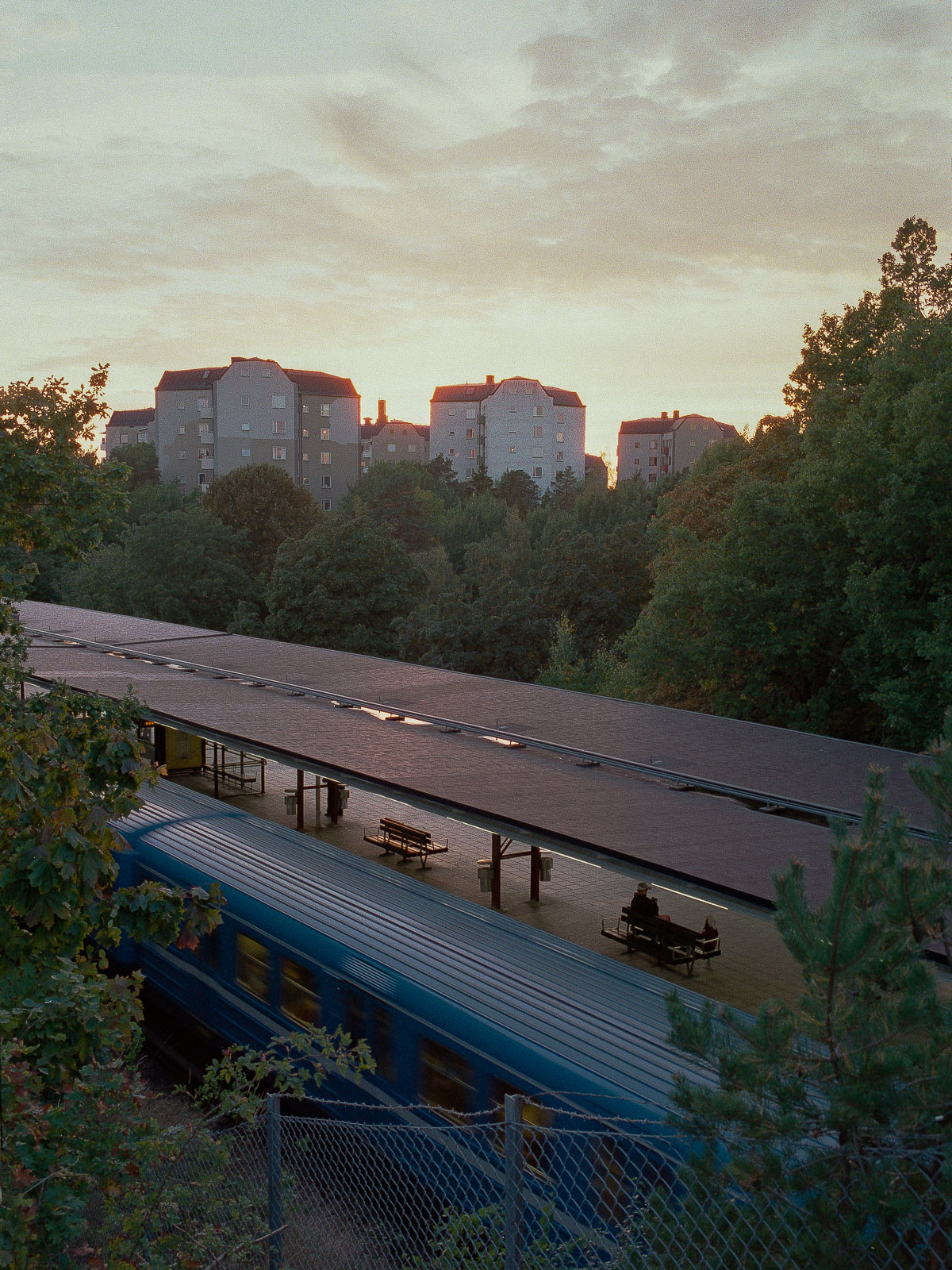
Leica M4-P
The biggest problem with the Biogon might be the number of appealing peers. While the Biogon has an edge in performance over most of them, a lot of these other lenses offer other advantages that can be quite meaningful in practice.
Still, the mid-speed 35 in M-mount is a tricky field. There are a number of great lenses but each has trade-offs. Depending on ones preferences these trade-offs might mean that the Biogon is a better or worse choice than any of the other offerings.
This almost legendary lens is available in a number of different versions. I’ve only shot with the latest, aspherical version – see below. The performance of the Biogon looks to surpass all of the earlier versions except for bokeh. The Summicron’s on the other hand are smaller and have better ergonomics. The trade-off is price as every version is more expensive than the Biogon.
I’ve shot this lens briefly. The Summicron ASPH has better ergonomics and is smaller. Image quality is mostly a wash. The Summicron has fewer distracting traits at wider apertures and smoother bokeh. The Biogon is sharper and has more even performance across the field stopped down. The Summicron is a much more expensive lens and it’s not unequivocally better.
This tiny lens offers most of what the Biogon does at a lower price and far smaller size. It lags the performance of the Biogon slightly and is far more prone to flare. Most M-mount cameras lack corresponding framelines but this is a small issue in practice.
Read the full review
One of my all time favourites the Nokton is smaller than the Biogon but still manages to be a full stop brighter. Not as well behaved as the Biogon on a technical level but has a wonderful signature. It also has far better ergonomics as well as can be had for a lower price. Most M-mount cameras lack corresponding framelines but this is a small issue in practice.
Read the full review
This far smaller lens offers excellent image quality at a very low cost. The Biogon has better performance by a hair. I tend to prefer the little Color Skopar thanks to its small size and excellent ergonomics. However the slower speed is sometimes a limiting factor.
Read full review
A quite recent lens, the 35/1.7 looks to be a very good performer. I’ve not shot it myself but from what I’ve seen it might have the best bokeh in its class as well as very good resolution and an appealing signature. Unfortunately it’s even bigger than the Biogon and looks to have even less pleasant ergonomics. Still if you can live with the size and focus ring, this lens looks hard to beat.
This faster sibling to the Biogon looks to offer truly excellent performance. The significant tradeoff is that this lens is far larger and far more expensive. A good choice if ultimate performance is the goal, but for me it simply looks too big.
I’ve not shot this smaller alternative but from all accounts it seems like an excellent option. Shares most of the strengths of the larger sibling but sacrifices a bit of speed for a smaller size. Though it looks appealing its a bit on the slow side for my preferences and I’m not sold on it being visibly better than for instance the Color Skopar.
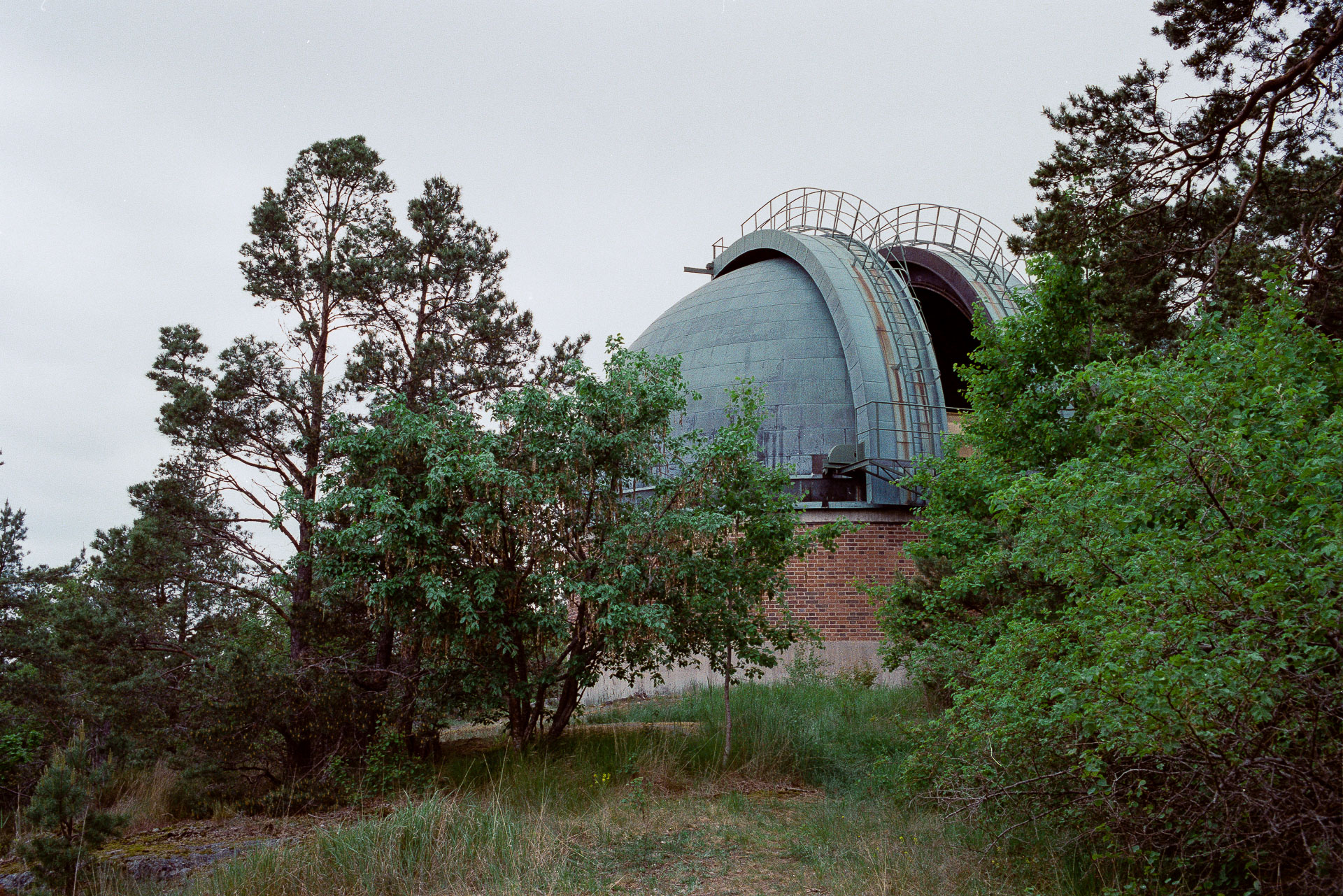
From Shooting at the Stockholm Observatory – Leica M4-P
The Biogon is a great lens that comes frustratingly close to an excellent one. While only slightly shy of objective excellence the lens suffers some minor annoyances and drawbacks. Well, at least to my tastes. The thing is that I feel more and more that the difference between a great lens and an excellent one comes down to just that – taste and preferences.
Depending on ones preferences the issues with the Biogon might be moot, but to me they all add up to a lens I don’t really feel is quite as compelling as it could be. At the same time I could see how it could be a practically perfect lens to someone with just ever so slightly different preferences.
So if you’ve read through the review and thought to yourself that each nitpick I’ve brought up is inconsequential and that the strengths appeal to you, well then this might just be the ideal 35mm lens available.
For me though – I’ll chalk it up as a near miss for now and move on.
All photos in this review were taken by me, using Leica M4-P & M9. Film used was Fuji Superia 400 or Kodak Portra 400, scanned on the Plustek 8200i. Exif-data is intact. Open any image in a new window for a closer look.